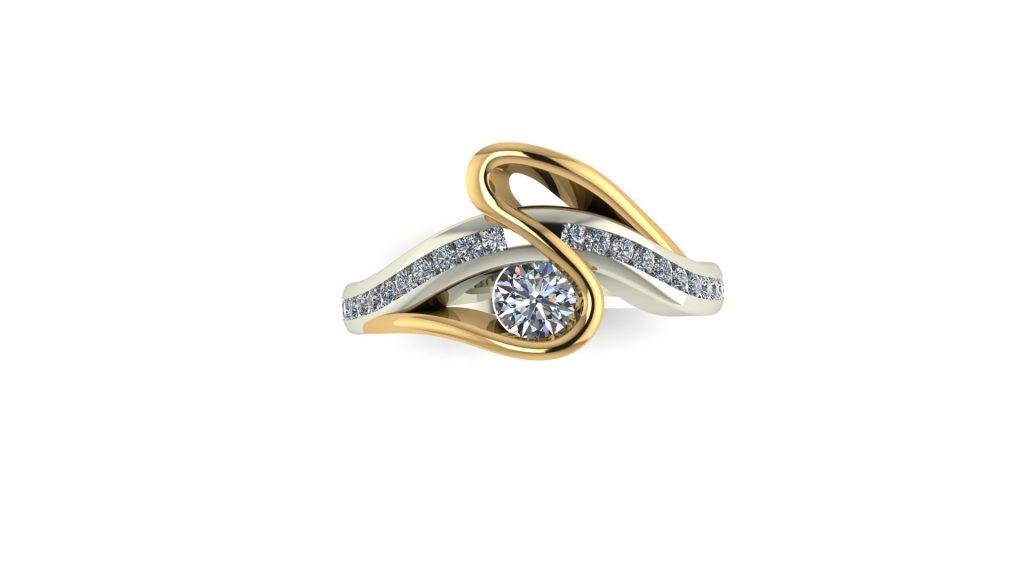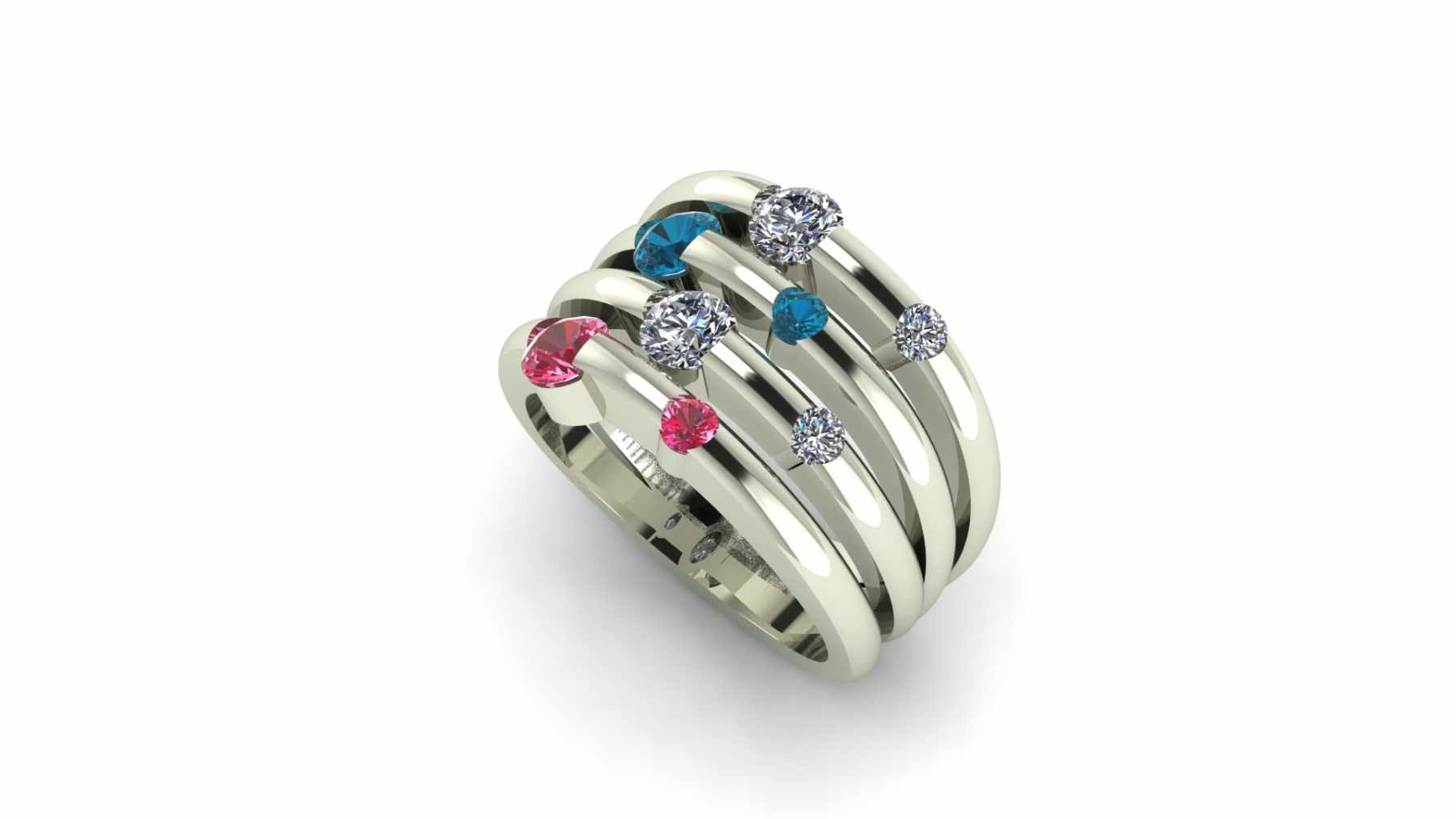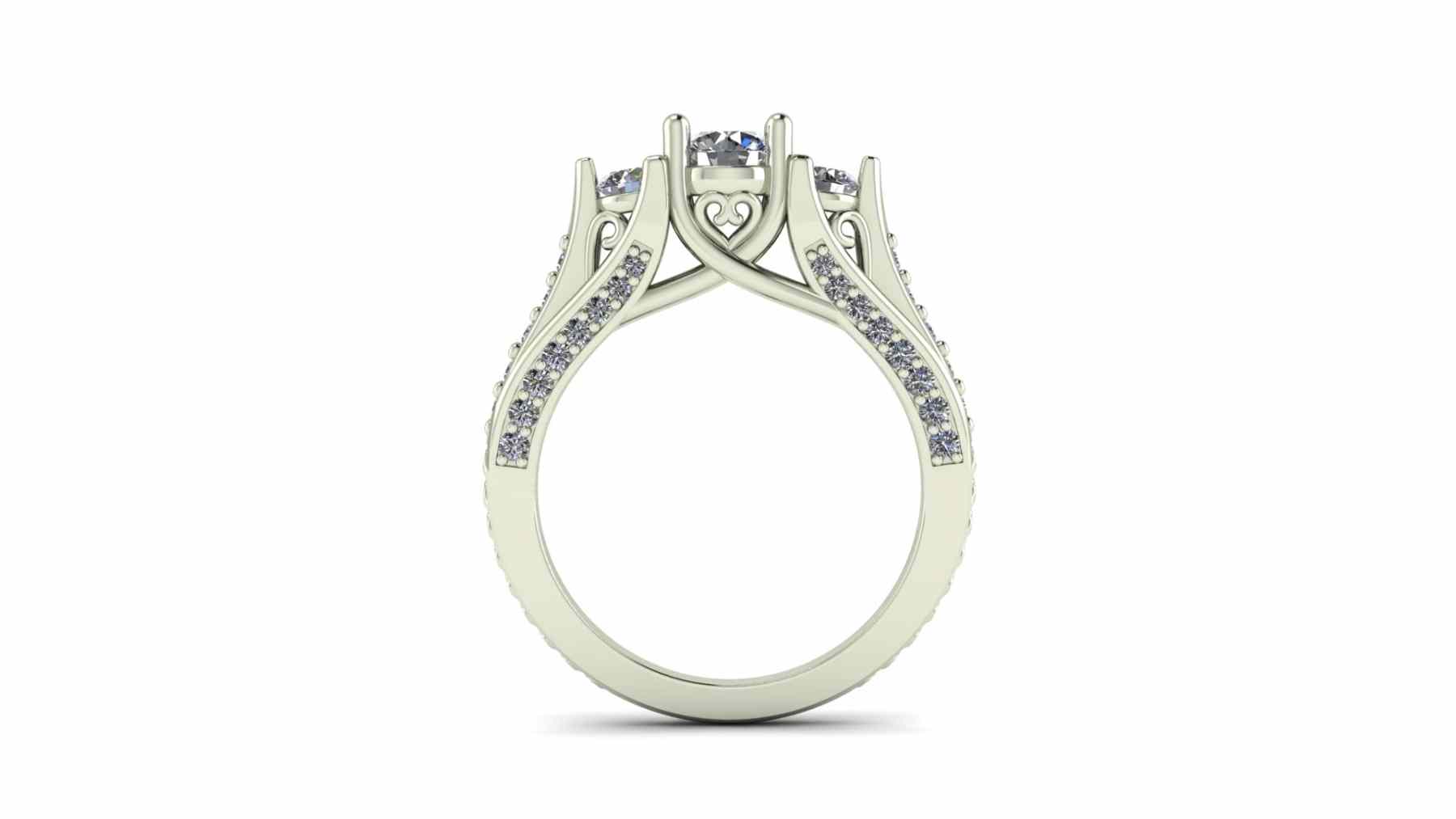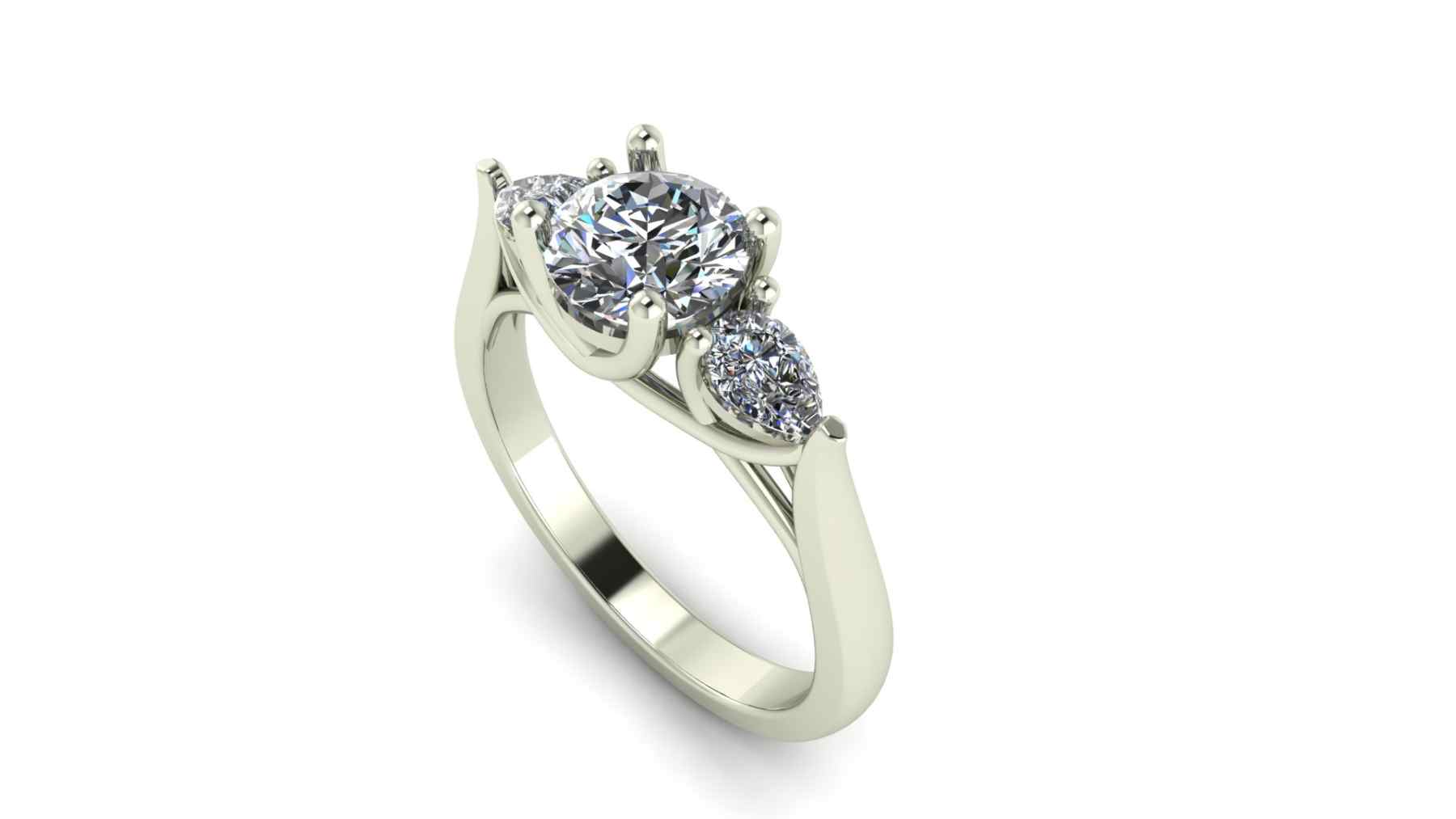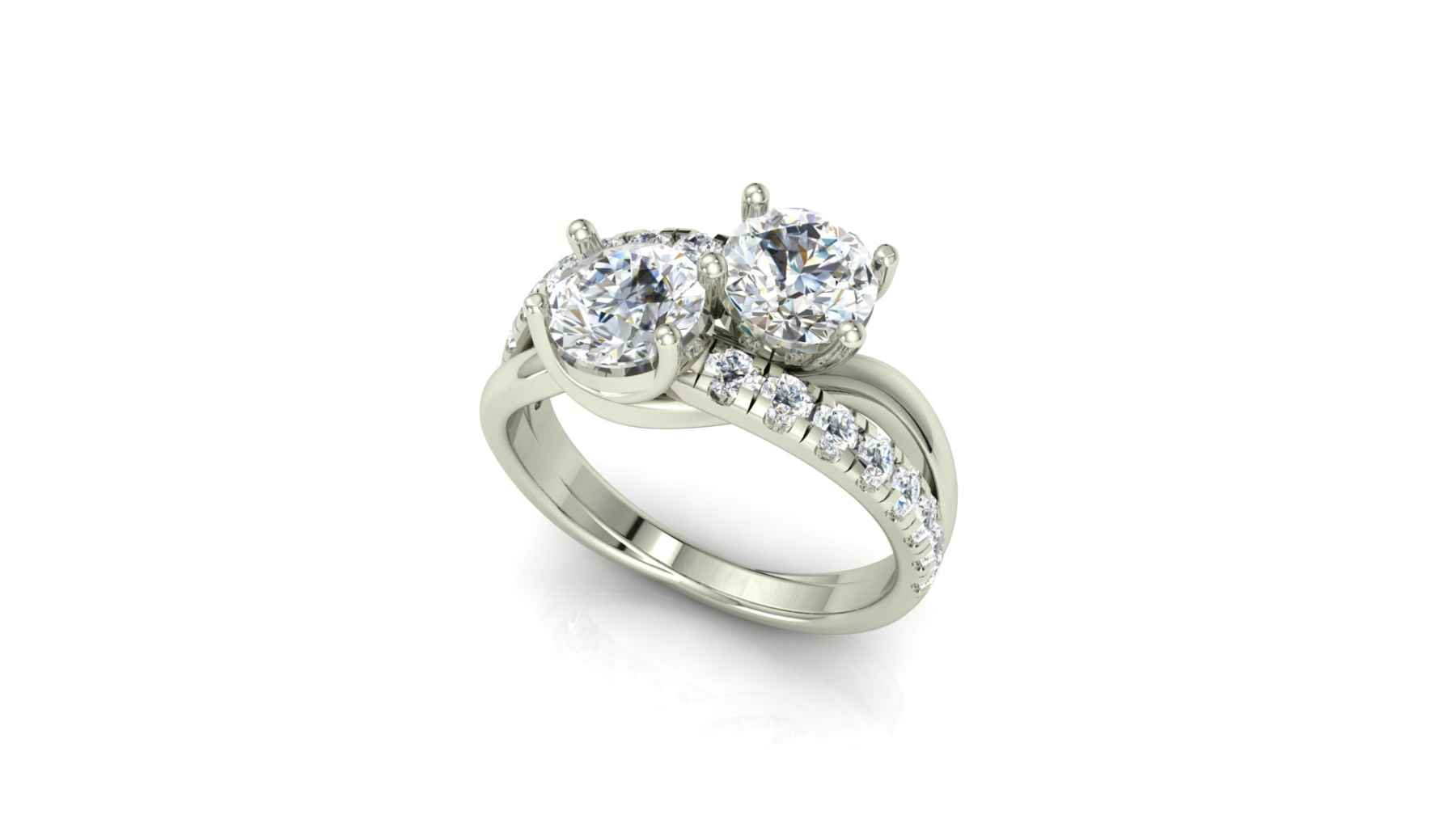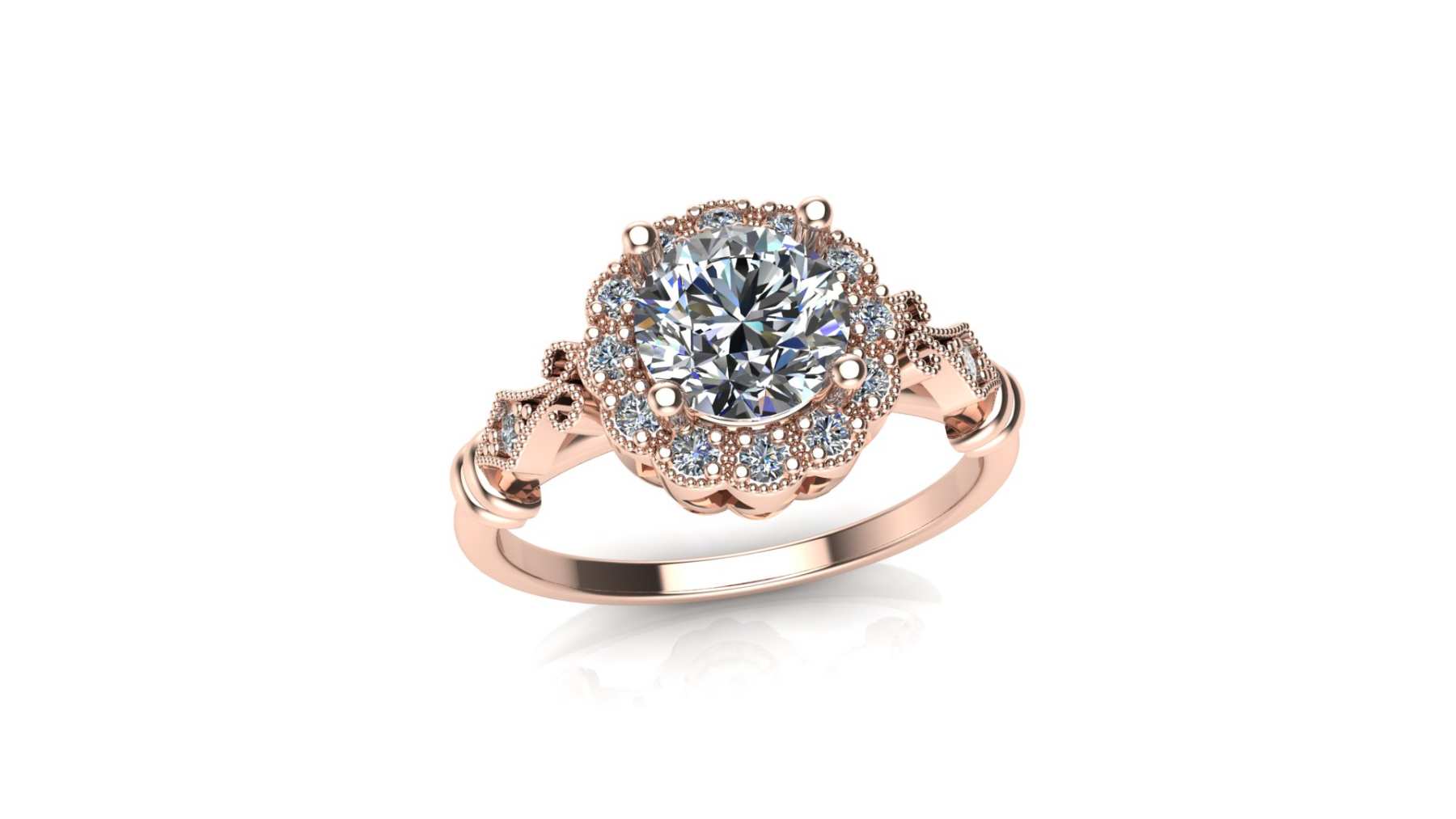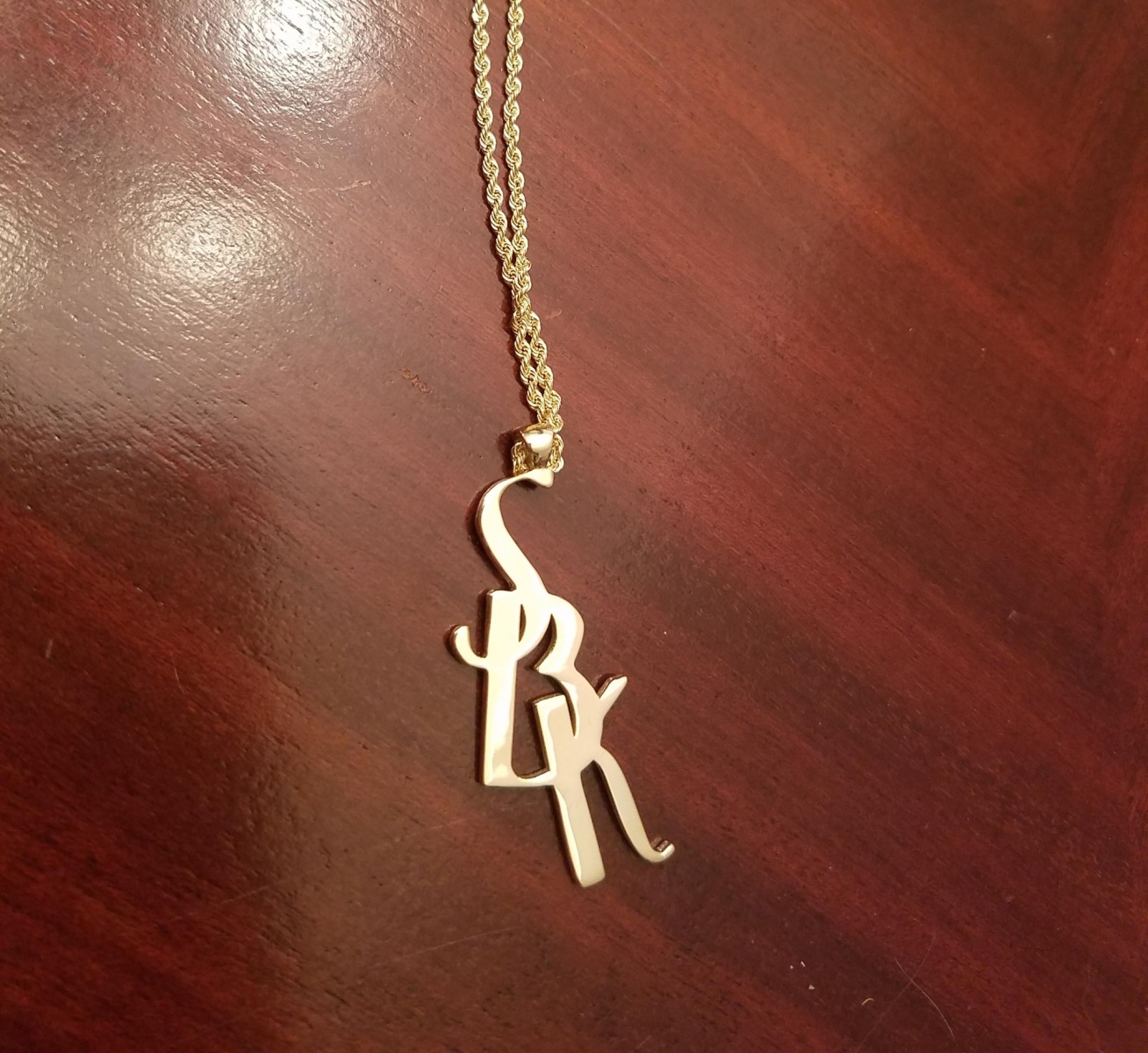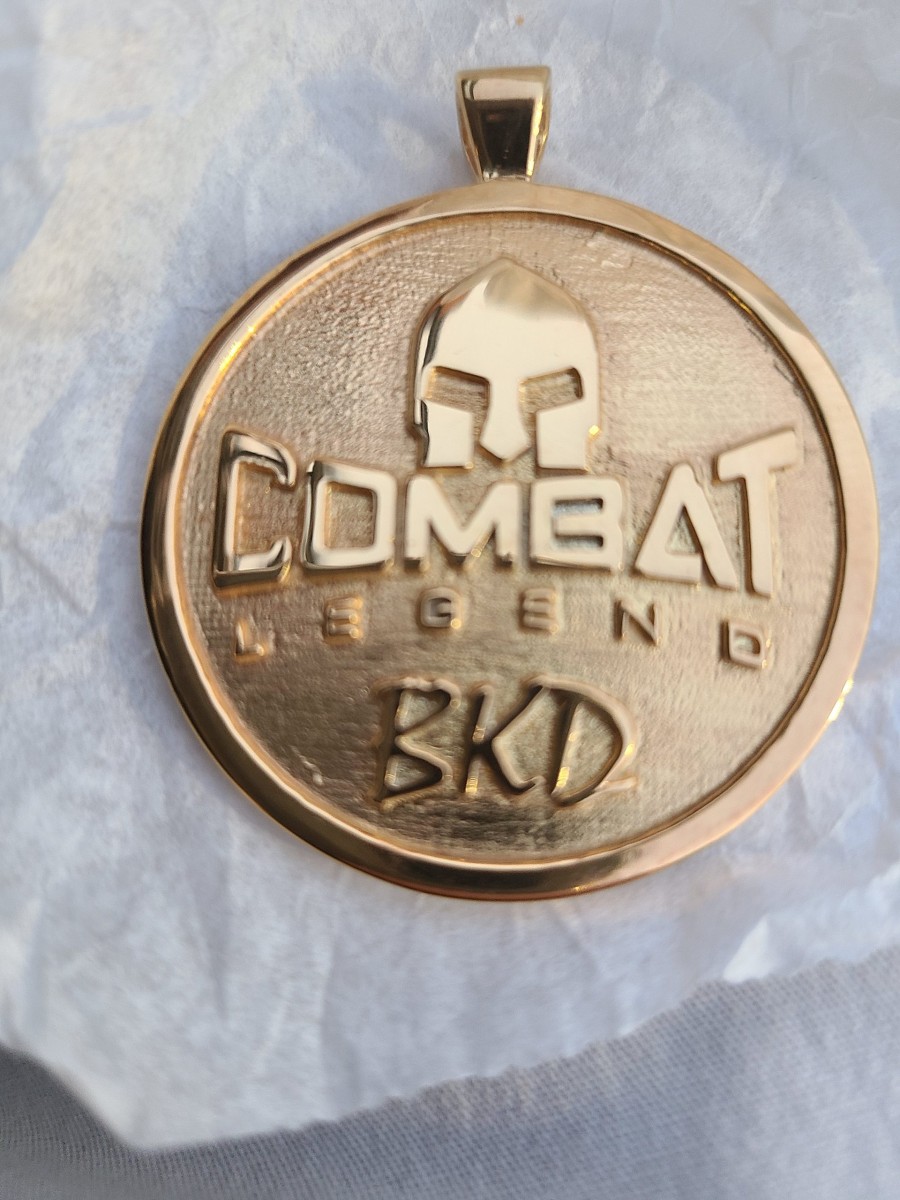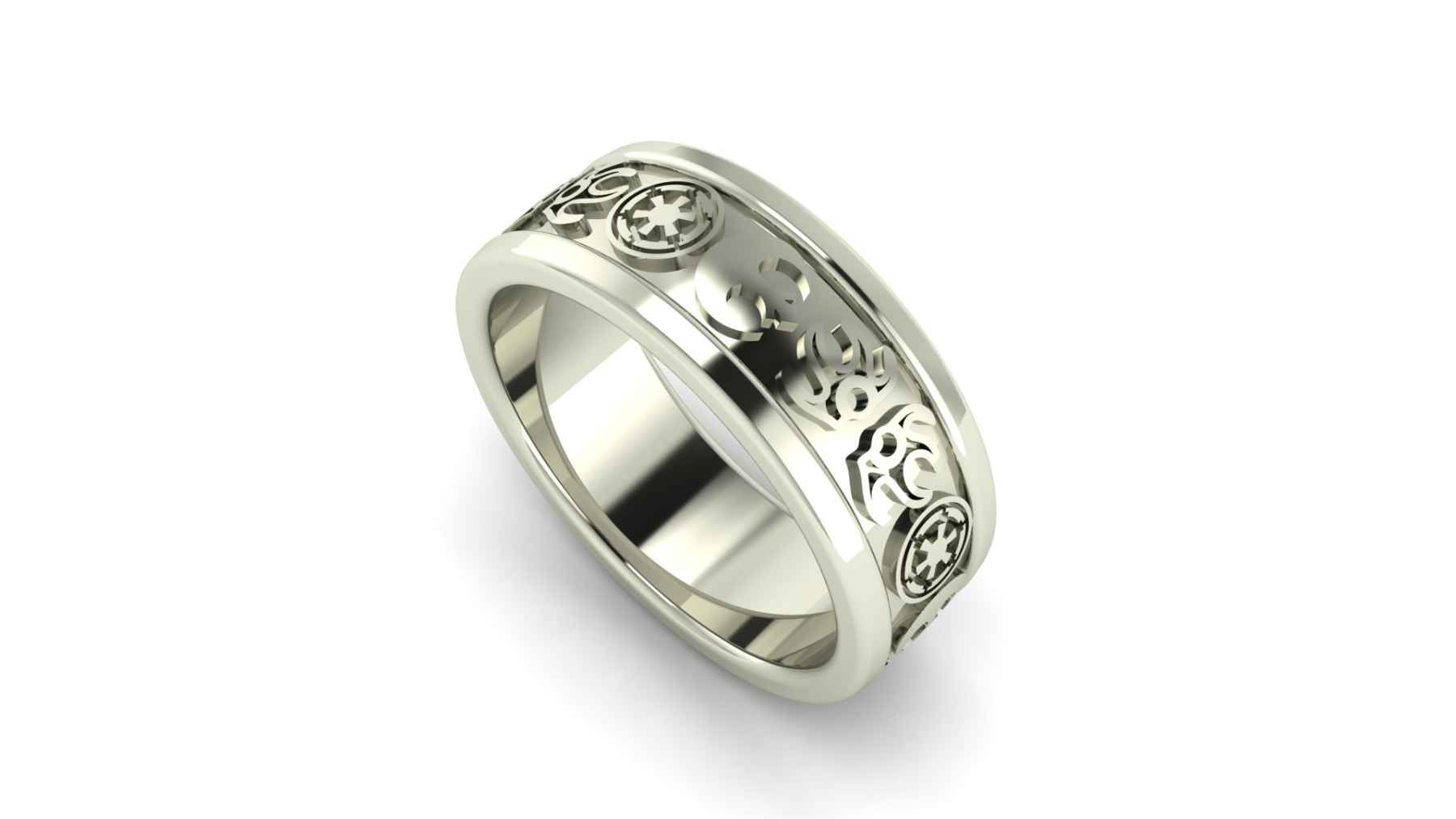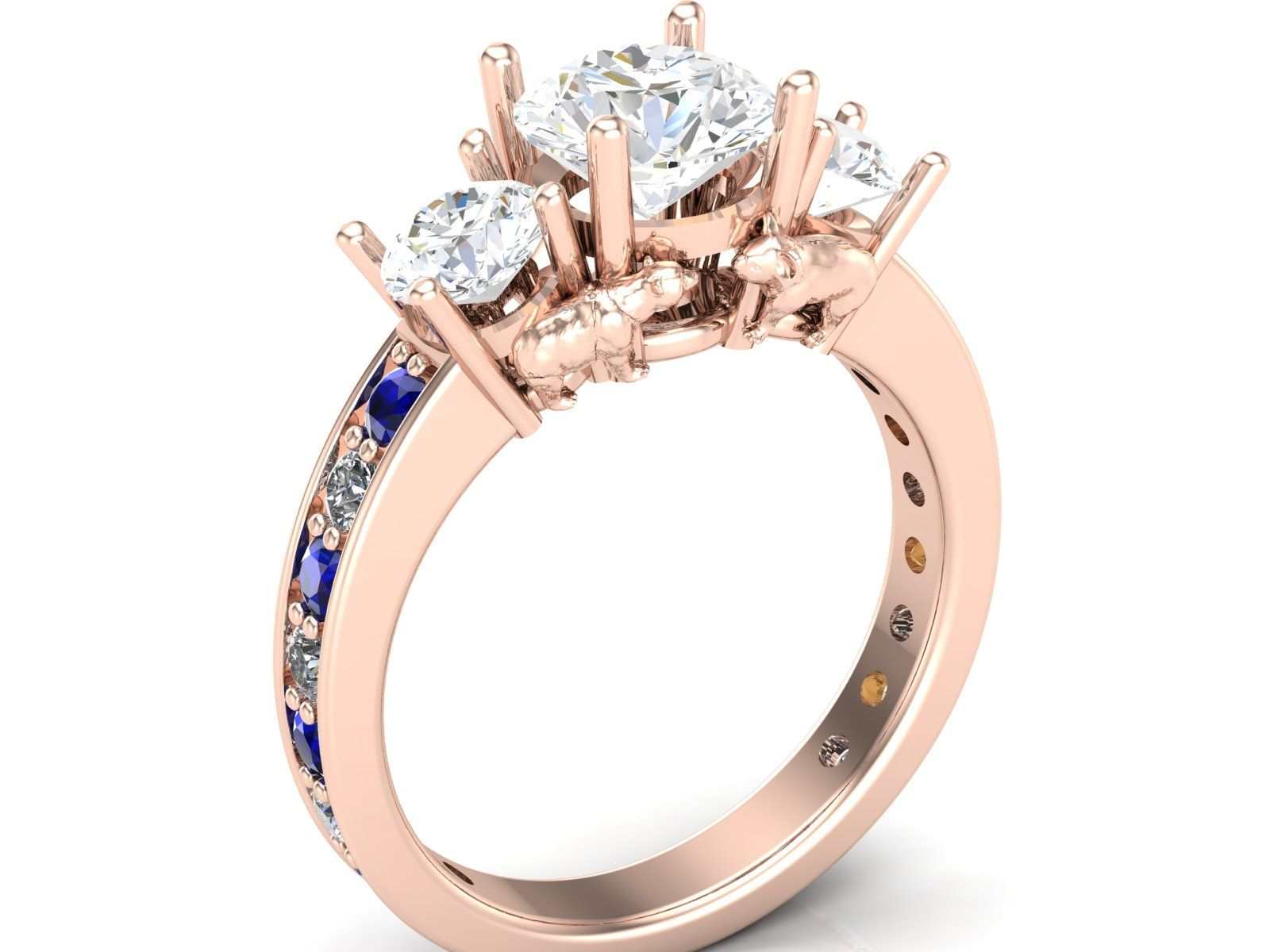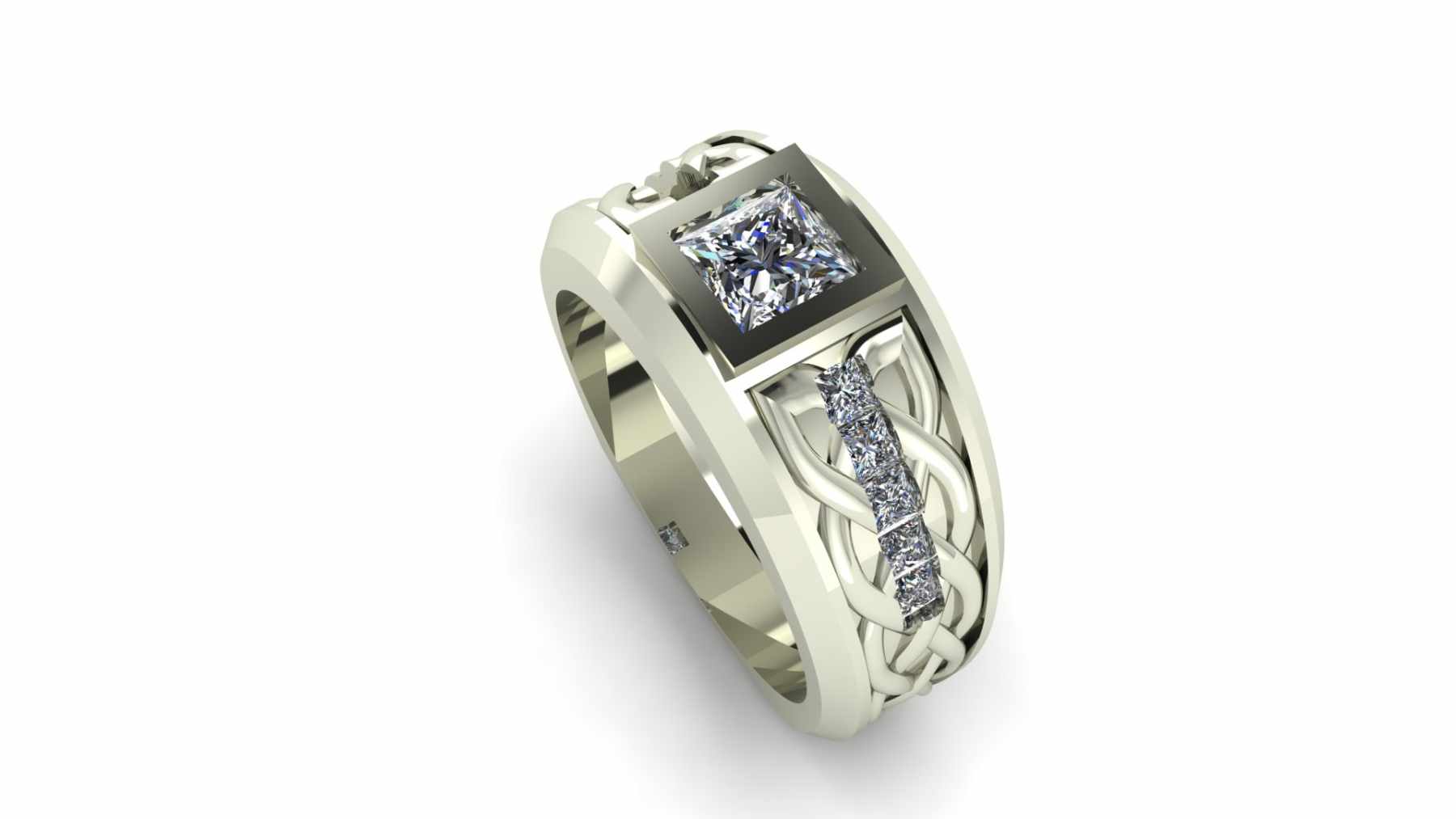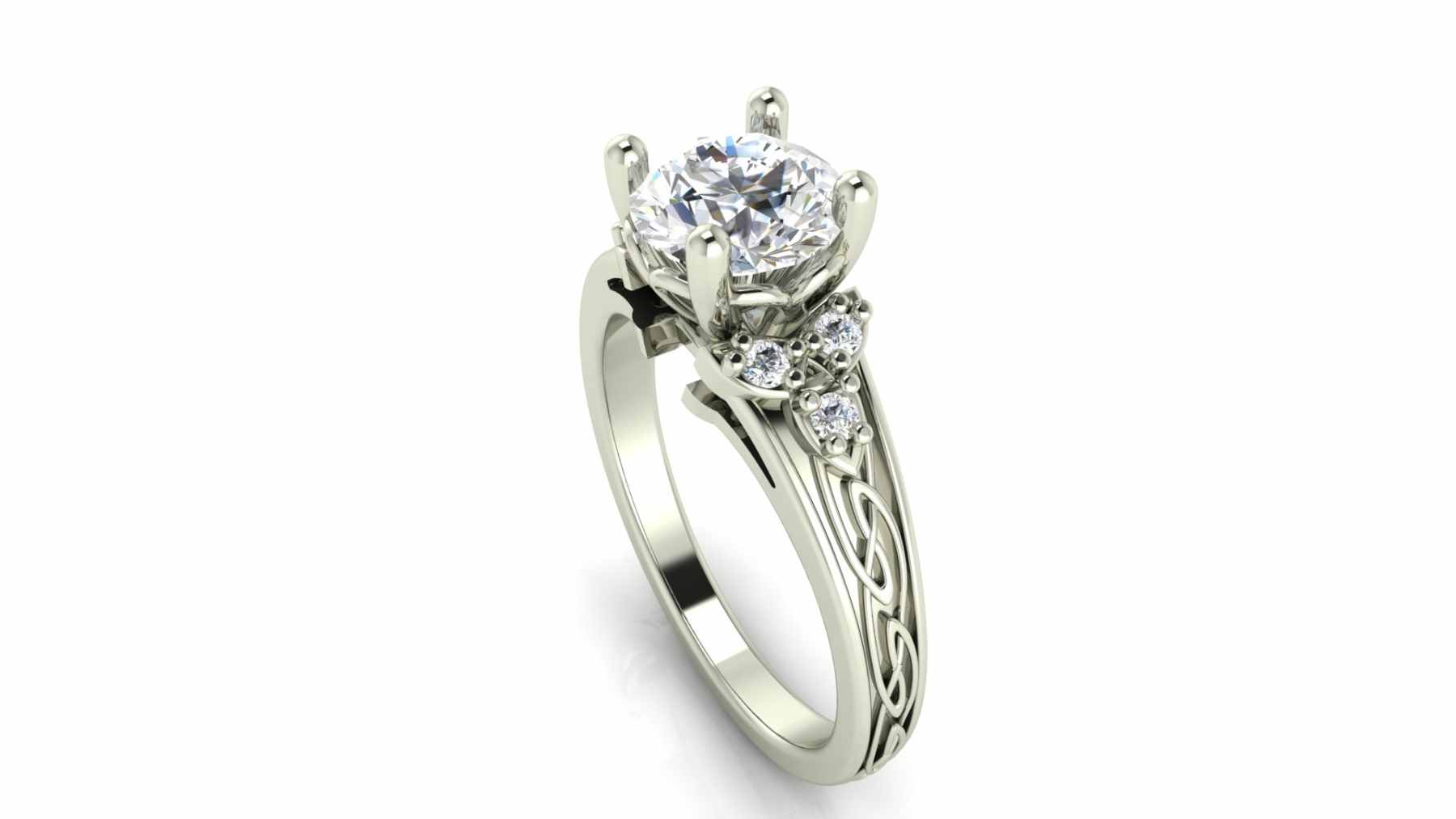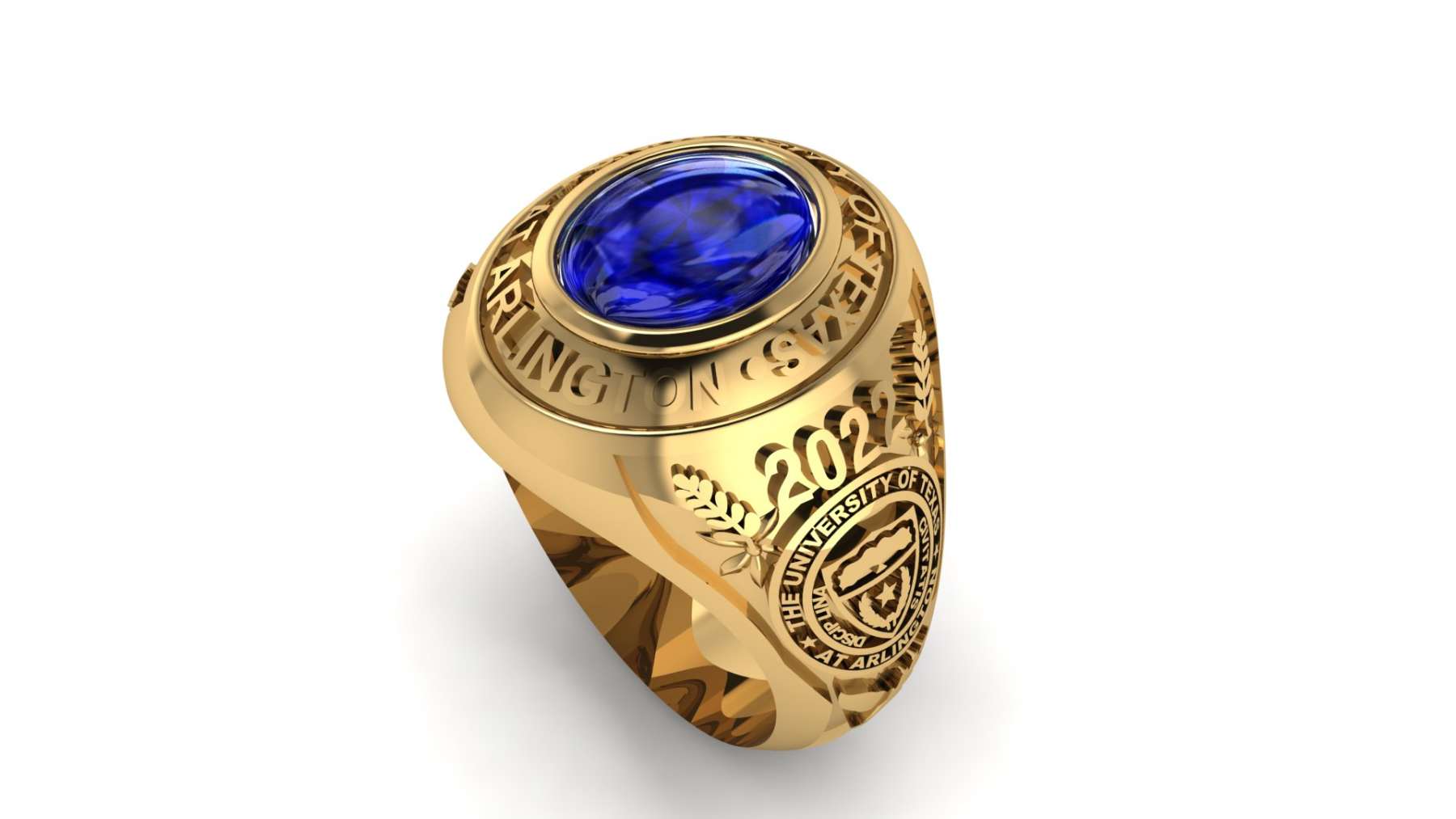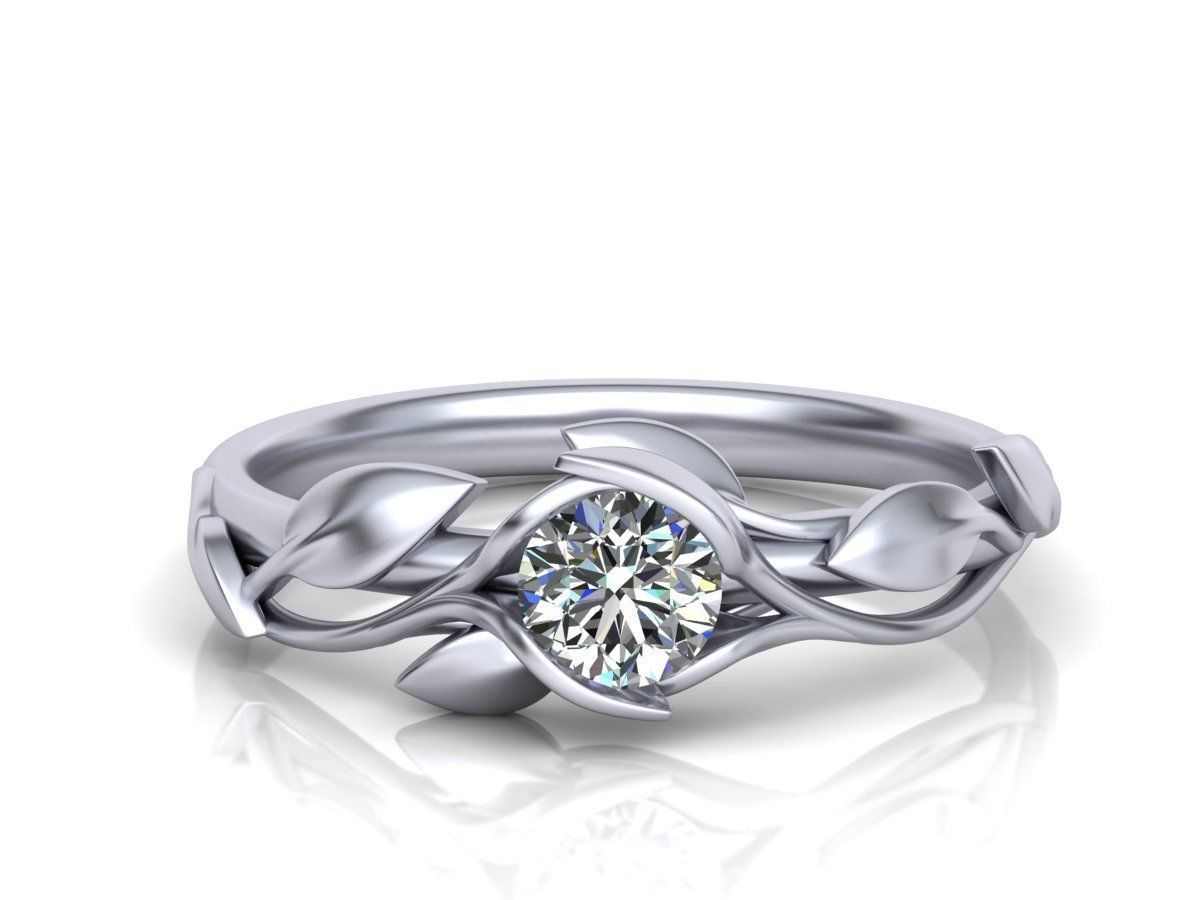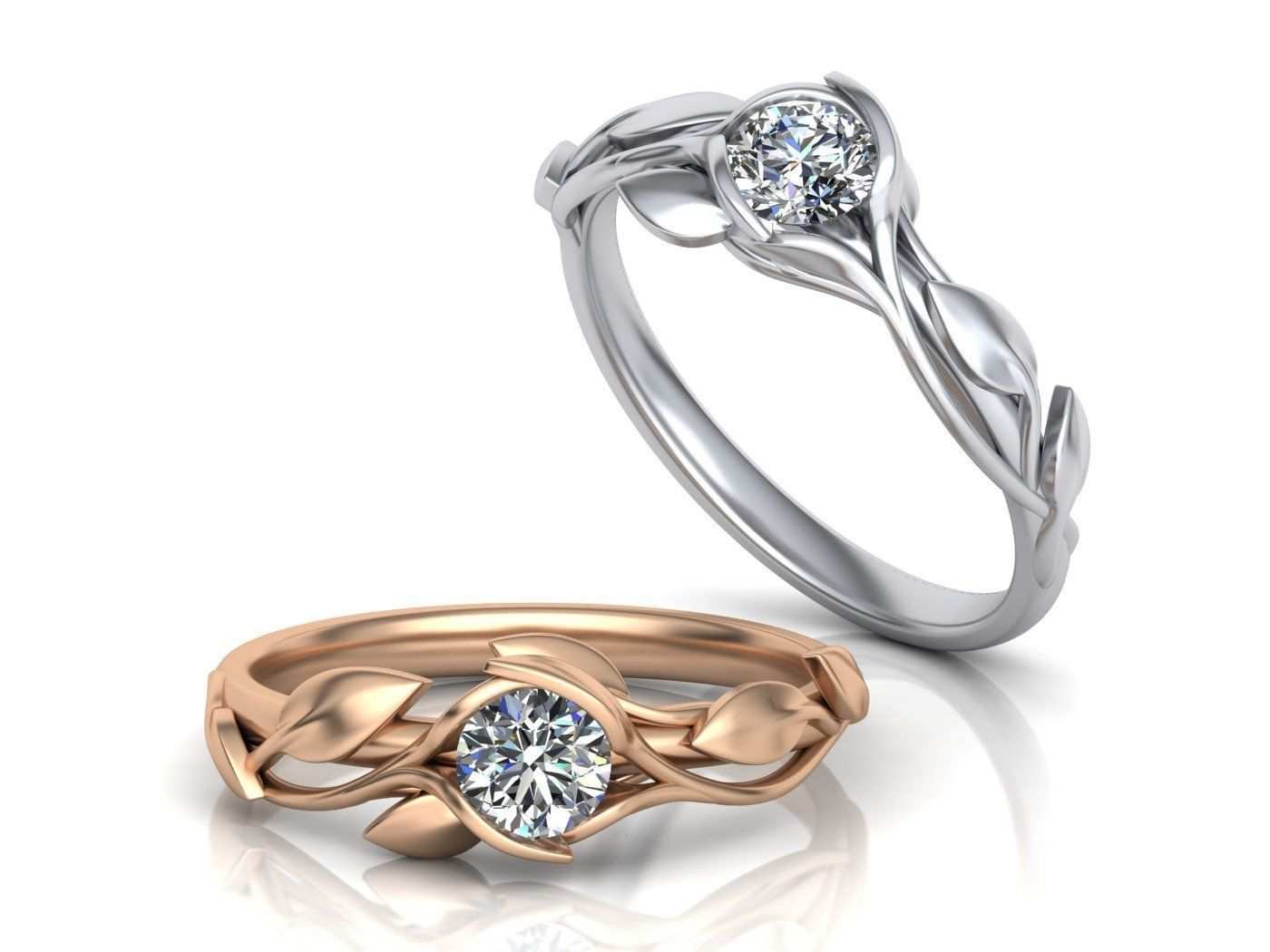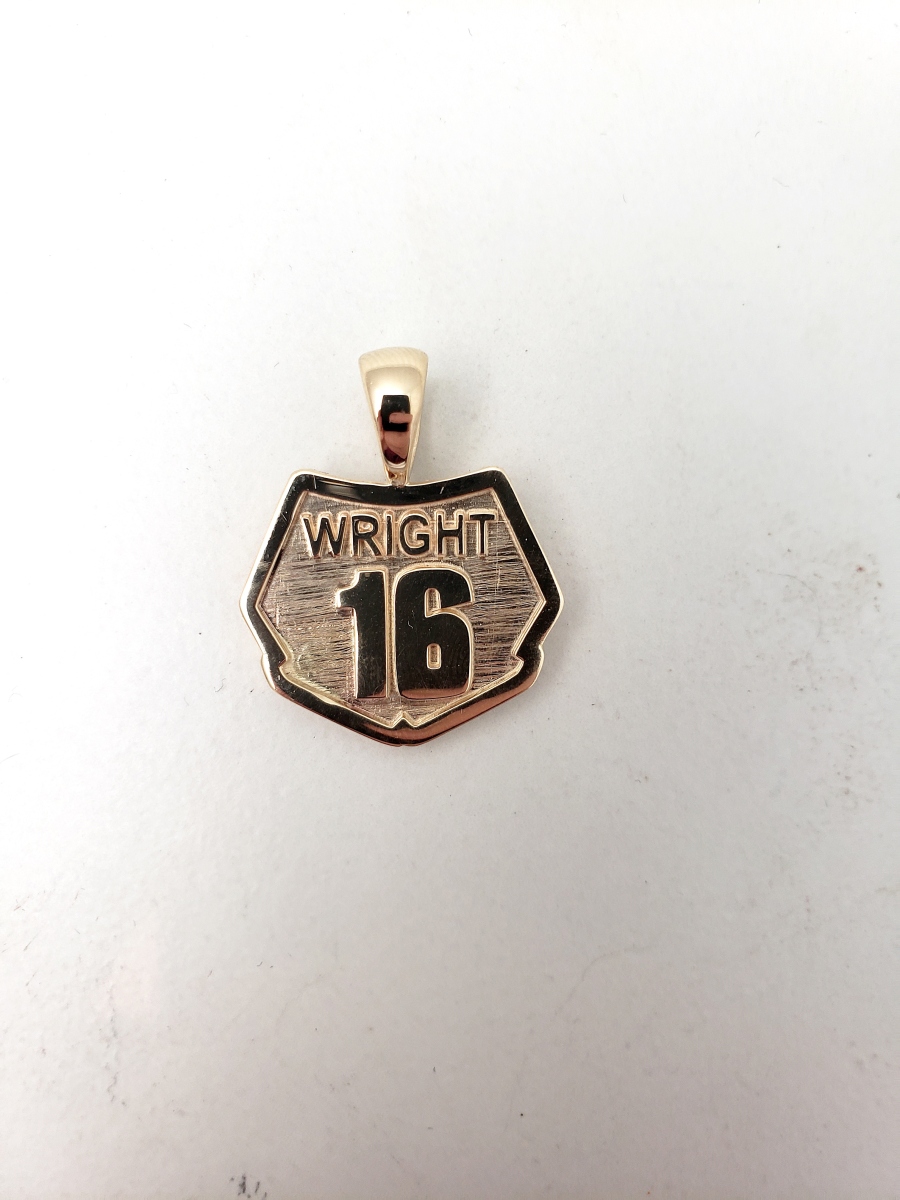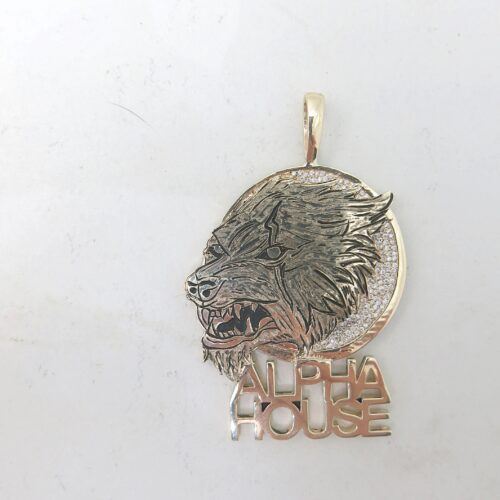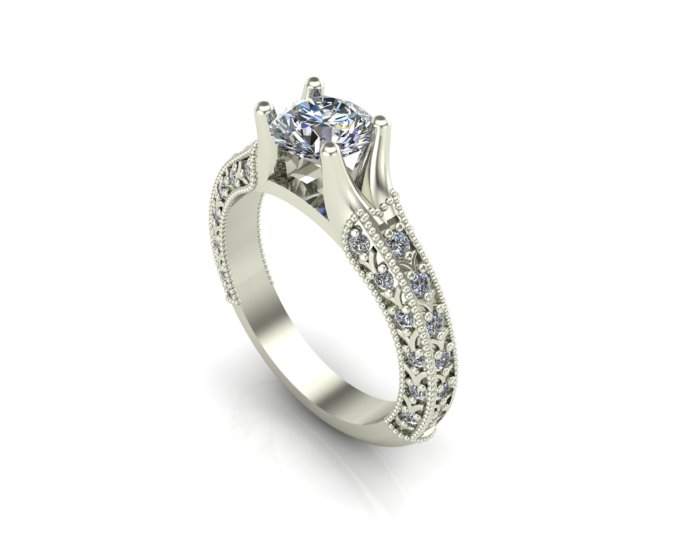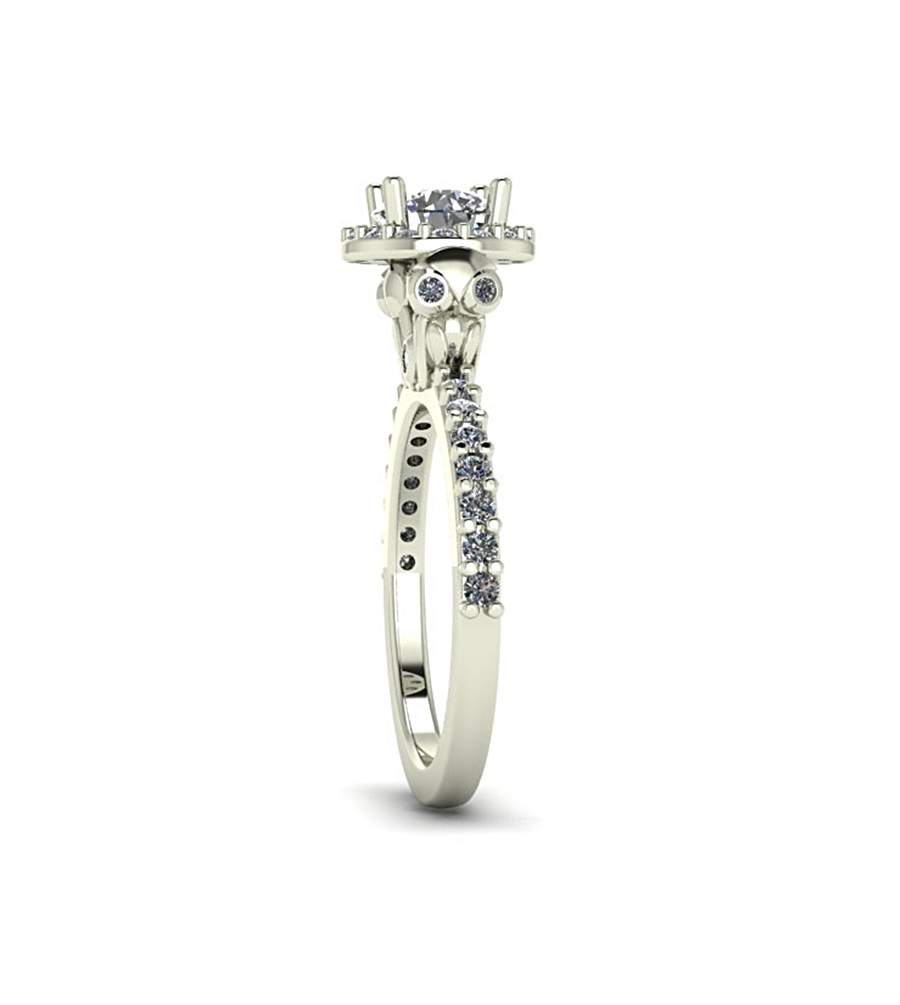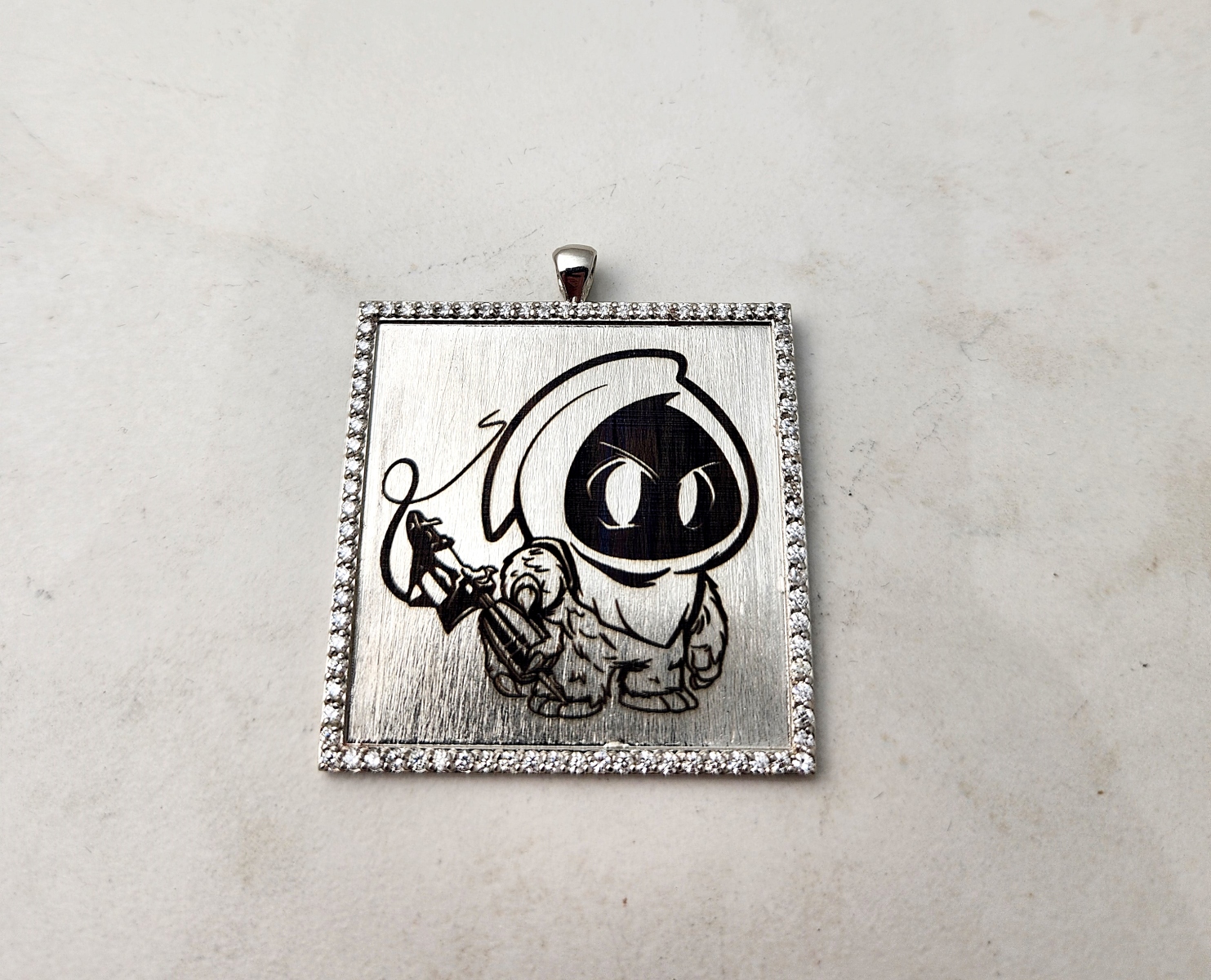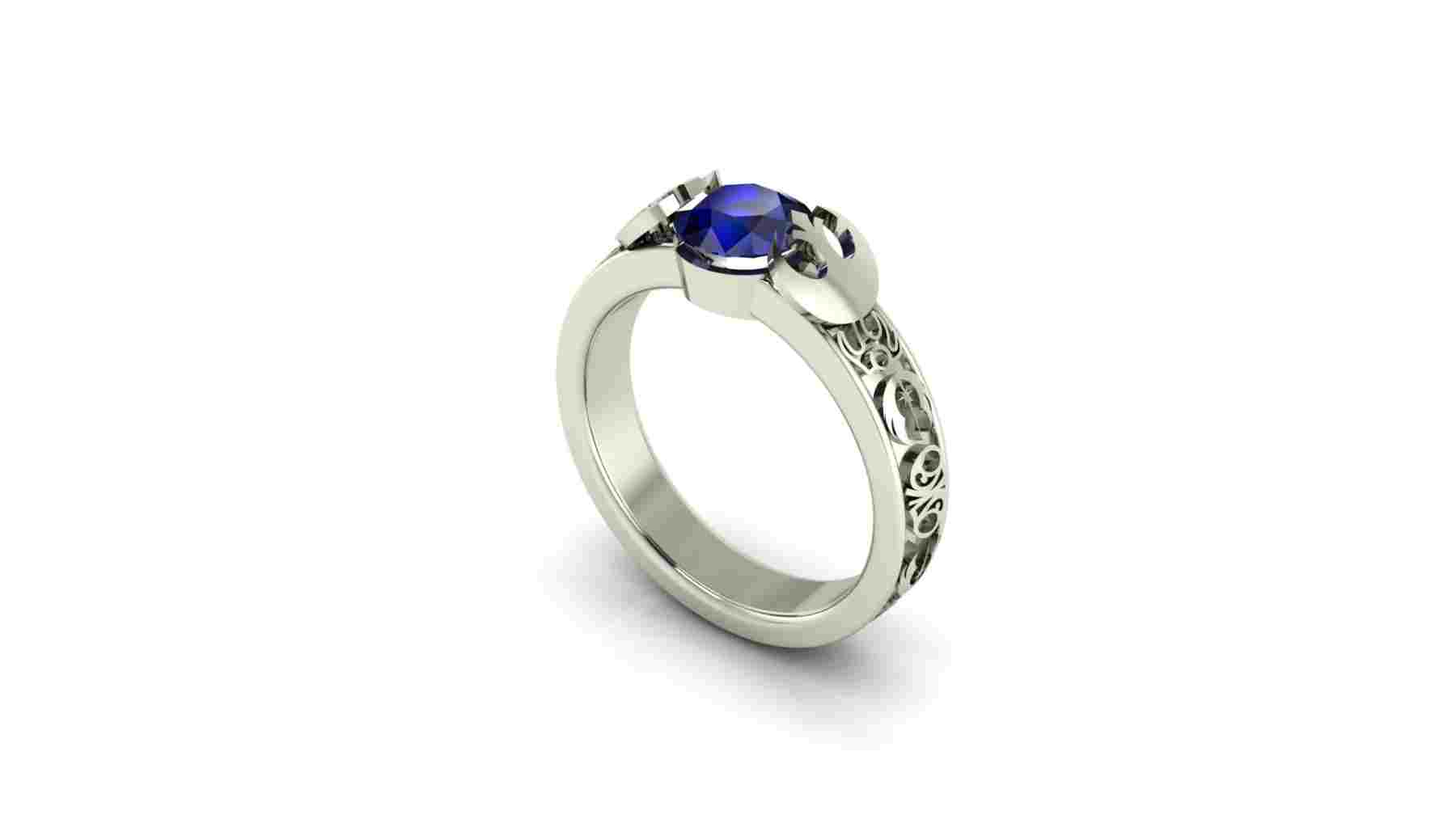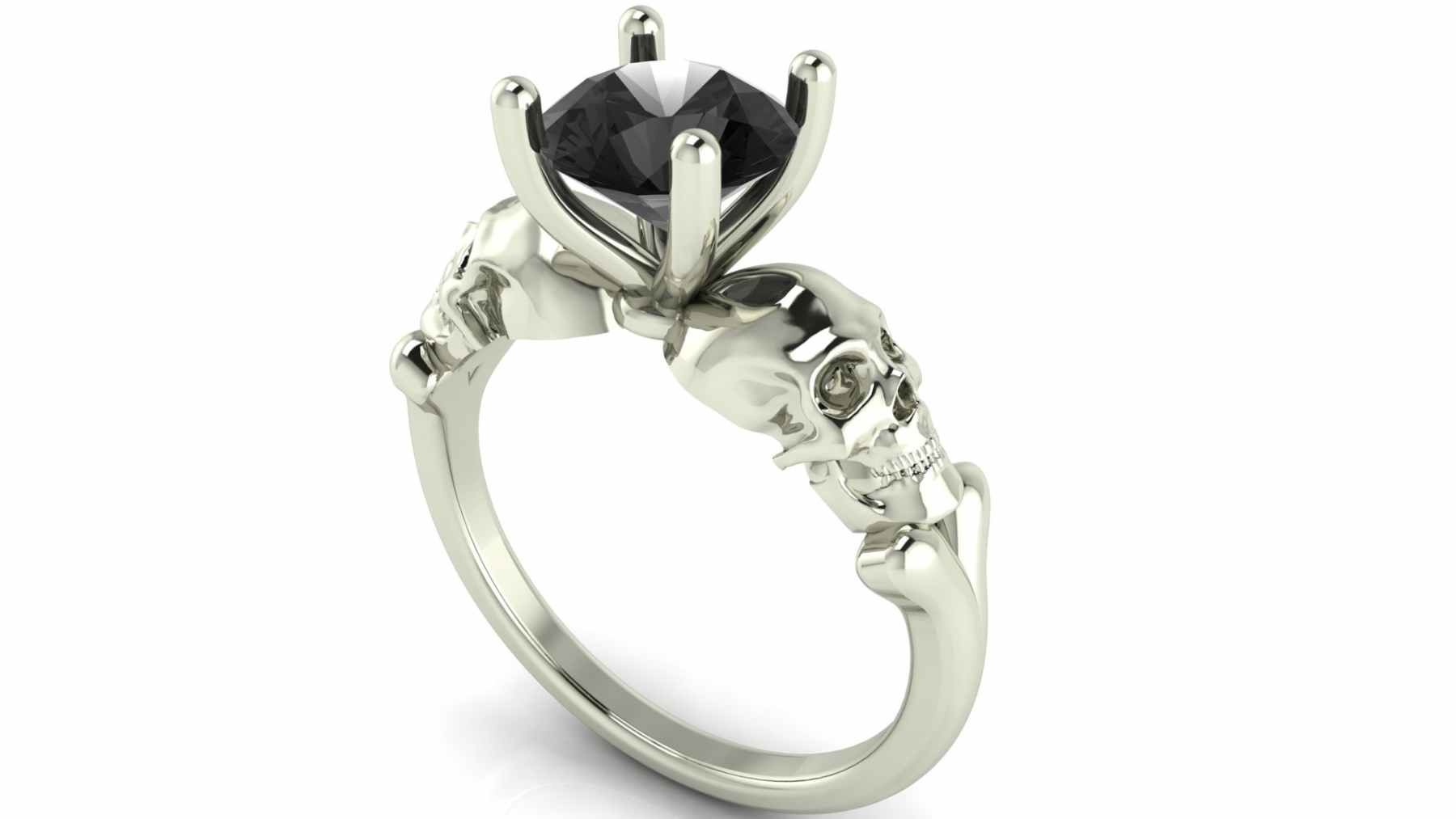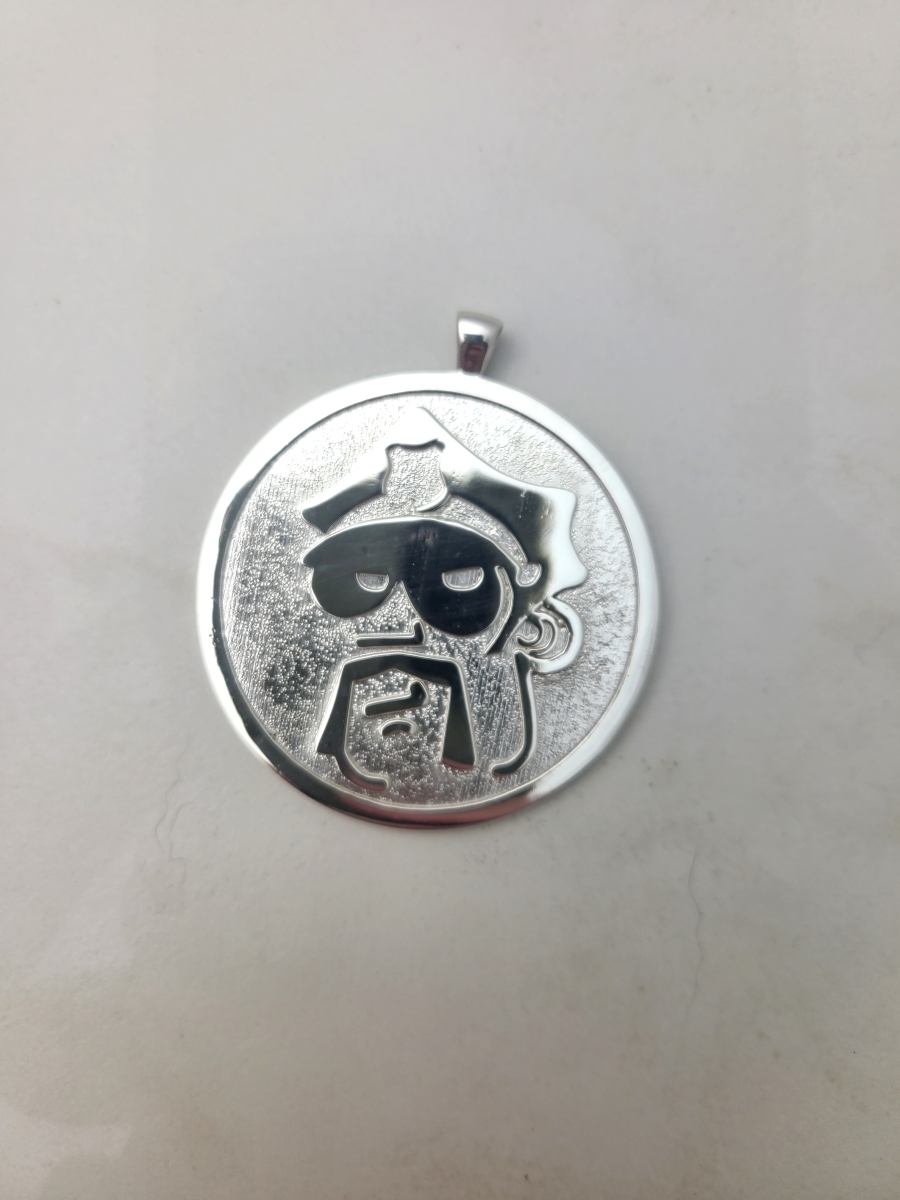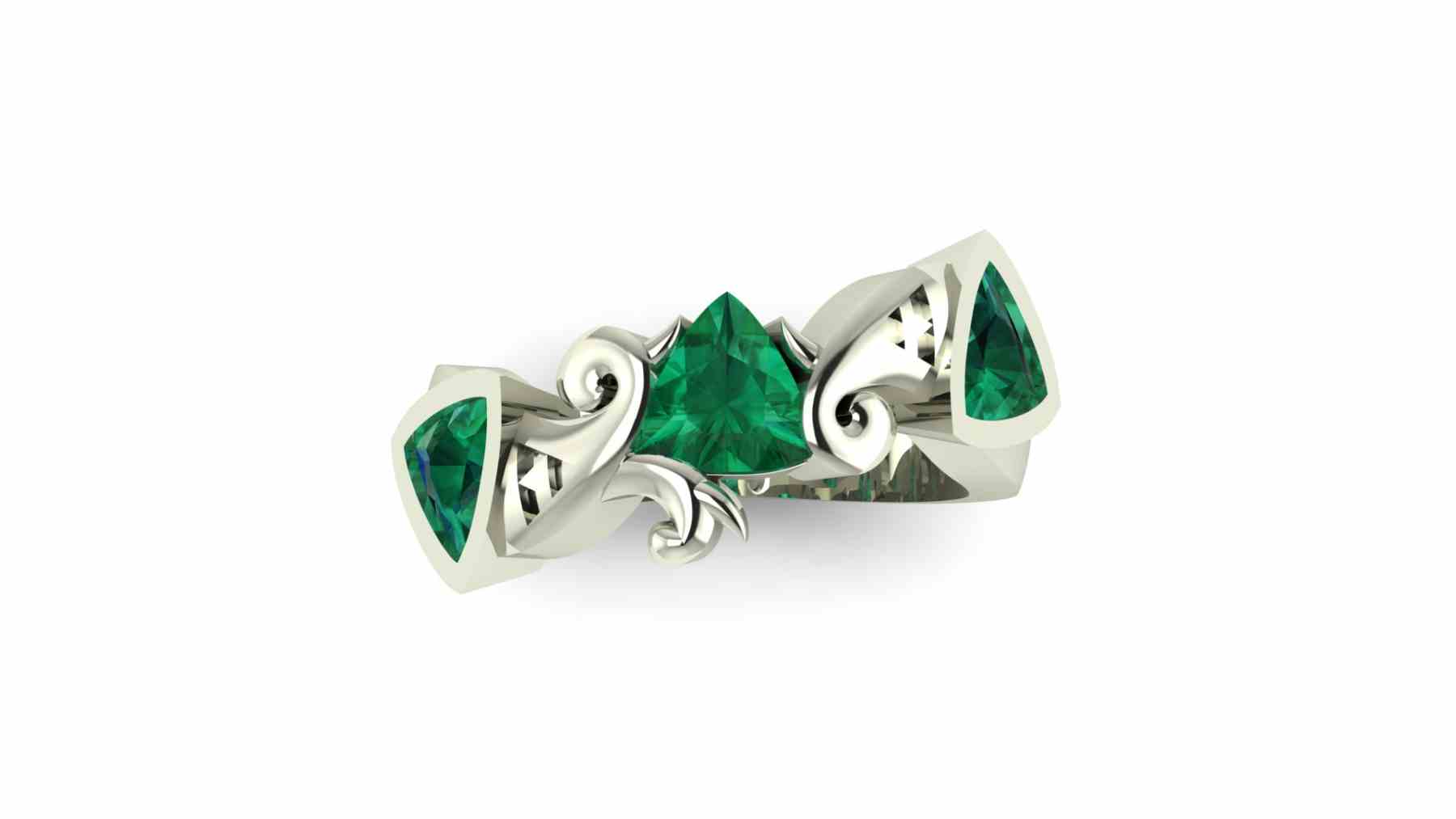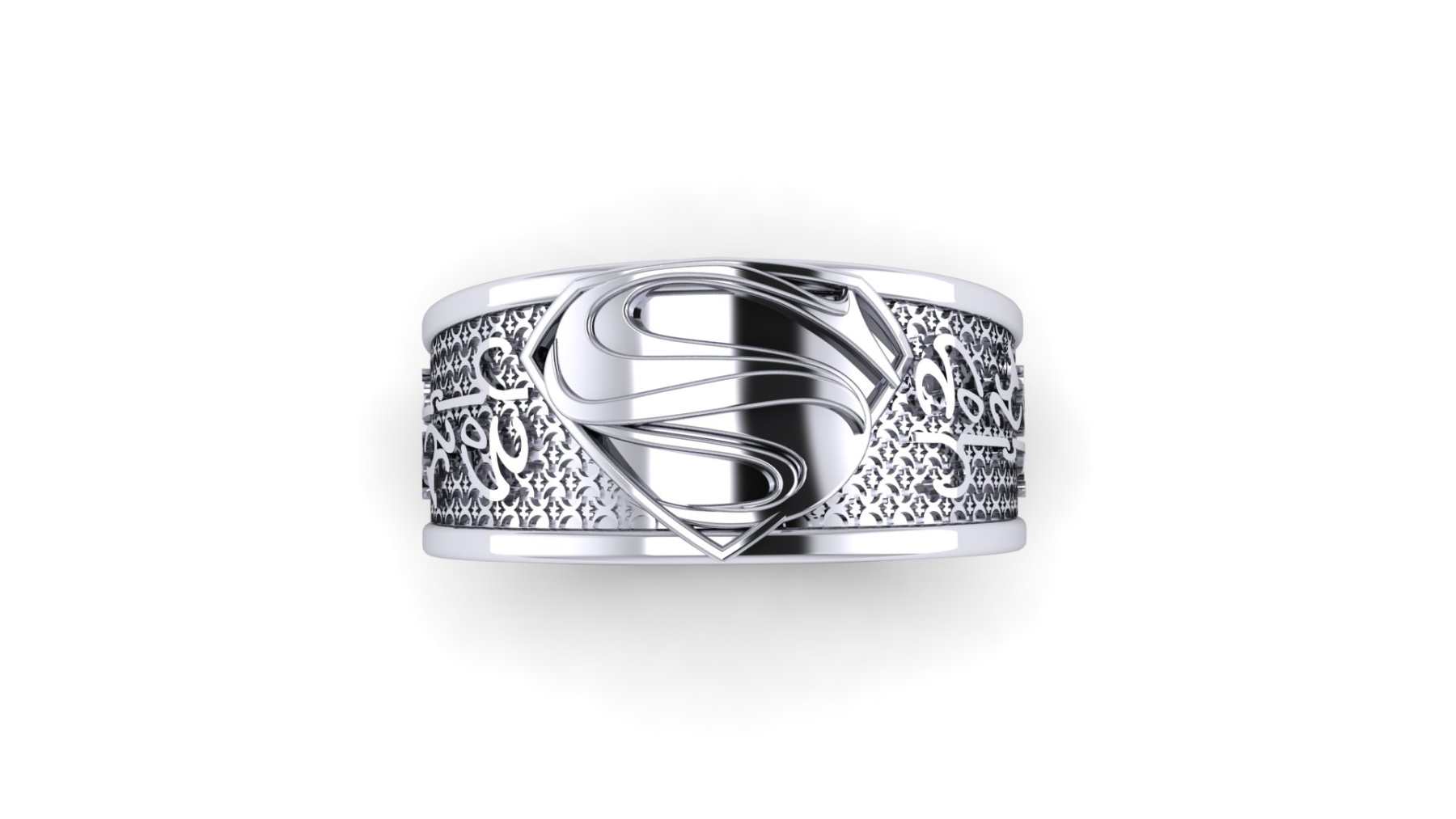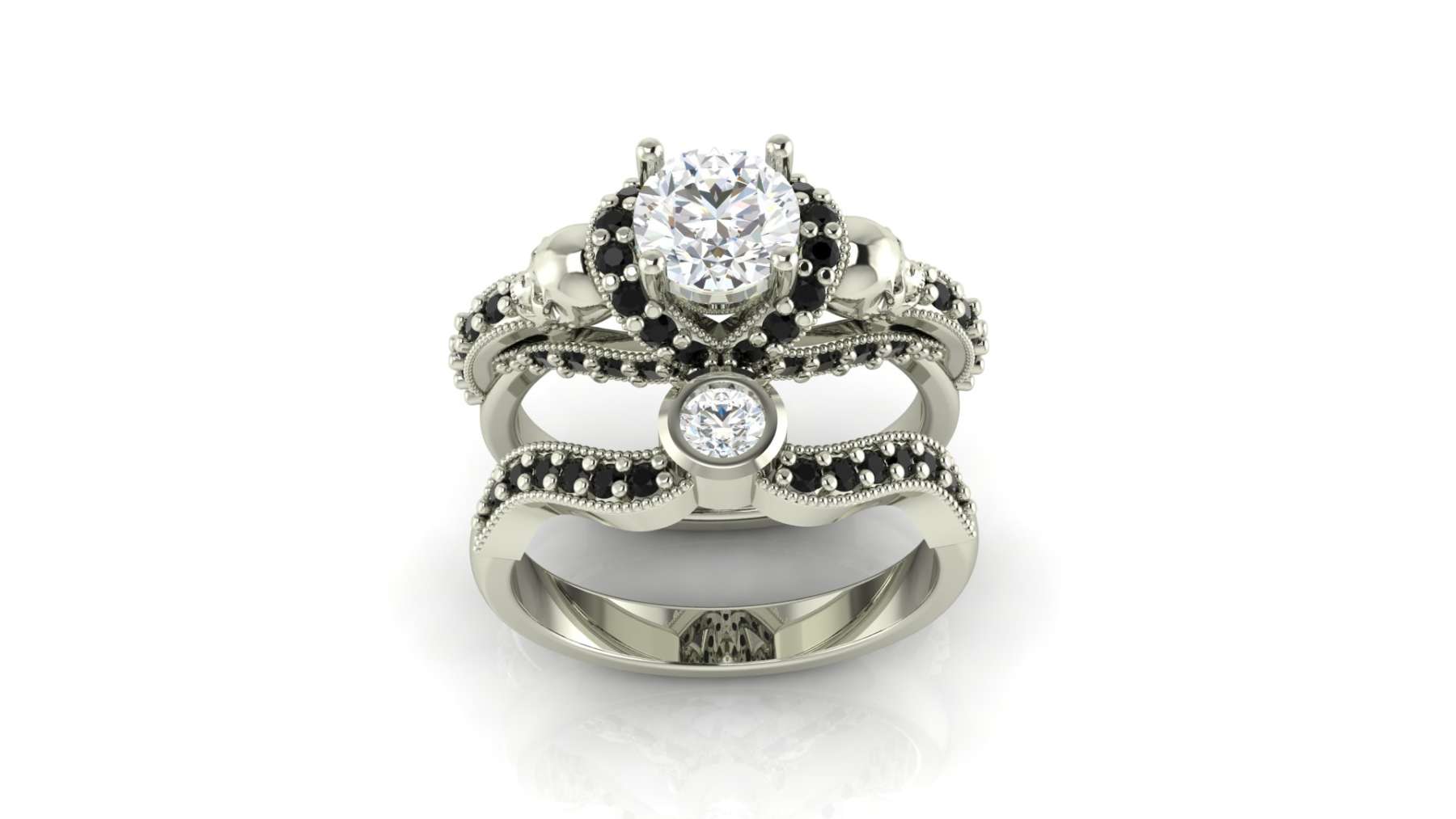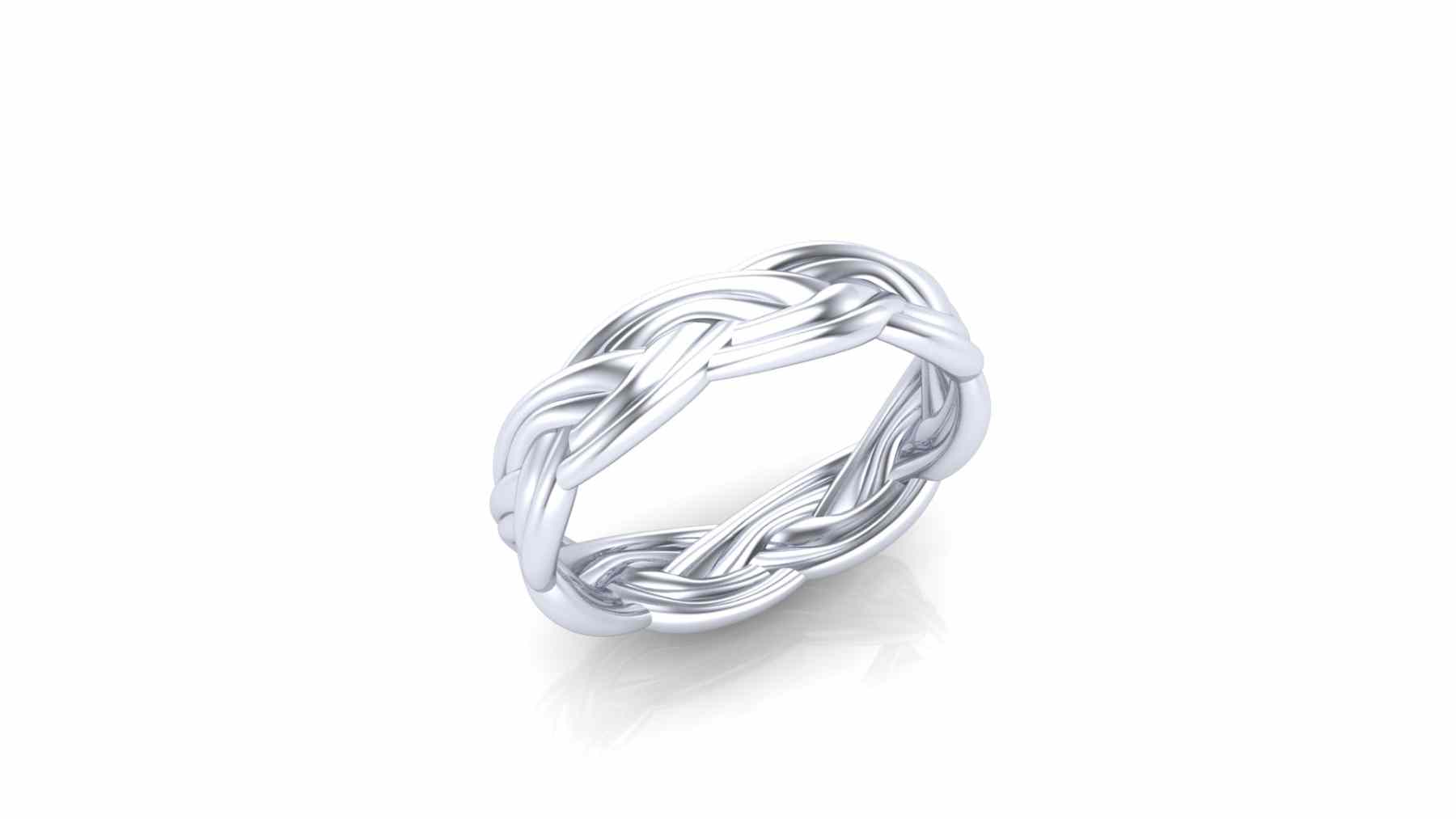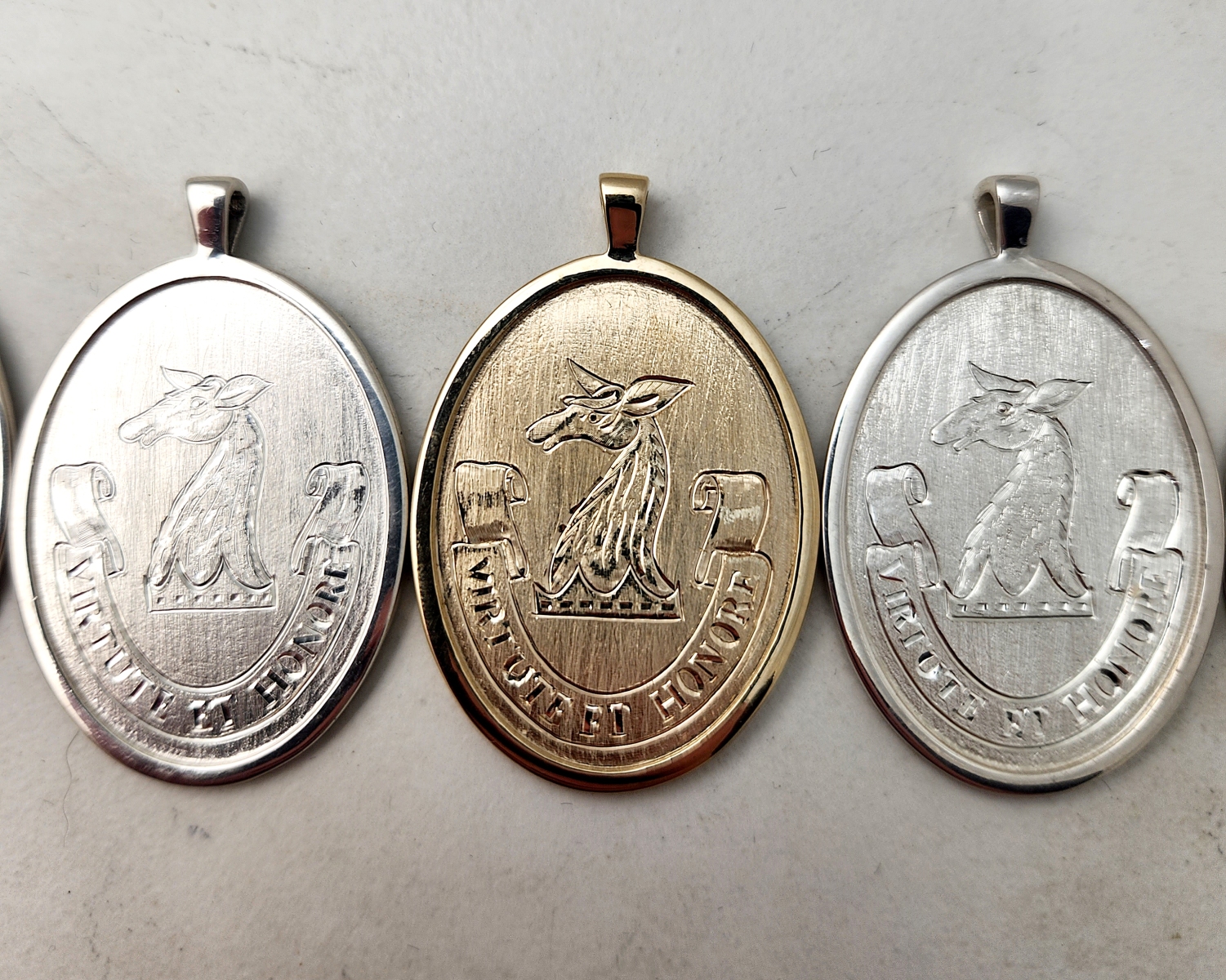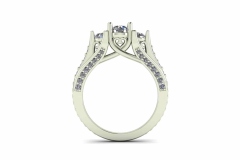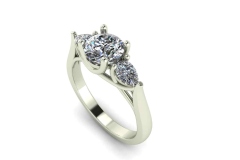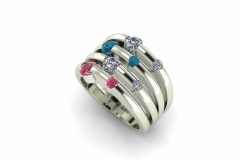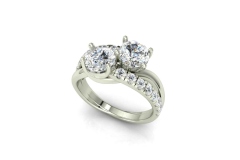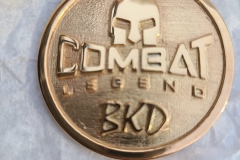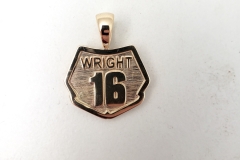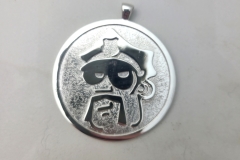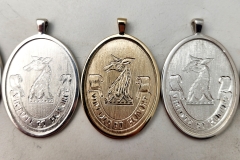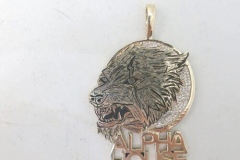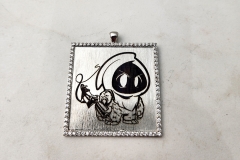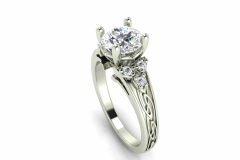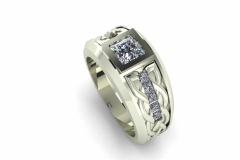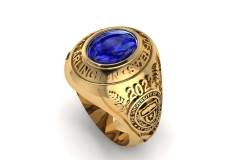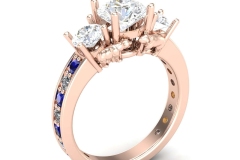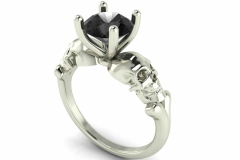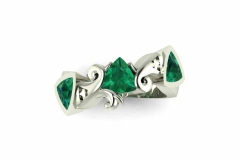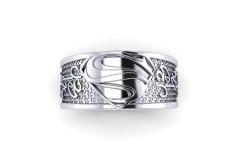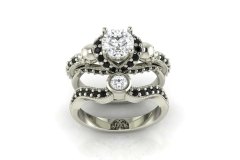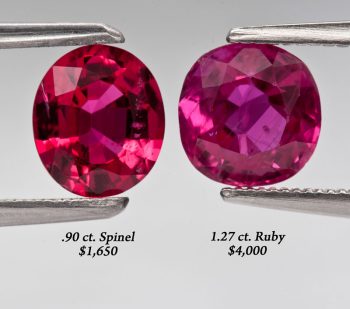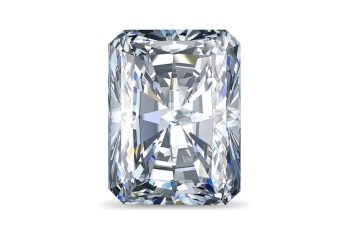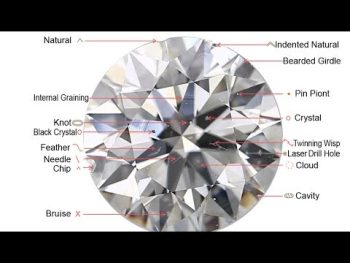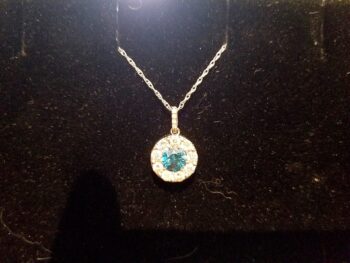Custom Jewelry has exploded in the last decade with the growth of CAD technology, internet jewelry sales, and the desire for something that no one else has. Before then, customized made jewelry was localized, expensive, and not very common. And you can’t pinpoint one of those phenomenon as the main reason. It is a necessary combination of the 3. If you removed one of them, we would be in a very different situation than we are now. In this post, we will discuss all custom jewelry. The beginnings, the process from start to finish, and what kinds of things can be made using our process.
Exploring the Evolution of Custom Jewelry
All jewelry was custom-made until 150 years ago. Consequently, it has a rich and fascinating history. Dating back thousands of years, people have been adorning themselves with unique and personalized pieces of jewelry. From ancient civilizations to modern times, customized jewelry has played a significant role in expressing individuality and style.
- Ancient Times:
- Custom jewelry was a symbol of wealth and status.
- Kings, queens, and nobles commissioned skilled artisans for unique pieces.
- Pieces were made from precious metals like gold and adorned with gemstones such as rubies, emeralds, and sapphires.
- Accessibility Over Time:
- Custom-made jewelry became accessible to the general population.
- Artisans created personalized pieces for everyday people, allowing for unique self-expression.
- Became popular for commemorating special occasions: weddings, birthdays, anniversaries.
- Modern Era:
- Continues to be a beloved form of self-expression.
- Advancements in technology allow for designing custom pieces online or working directly with jewelers.
- Individuals can create personalized necklaces, custom engagement rings, or one-of-a-kind bracelets.
- Allows for the creation of something truly special and meaningful.
Traditional Handcrafting Techniques in Jewelry Making
Before CAD and lost wax casting, jewelry was crafted for millennia using various techniques. Before the methods used today were invented, jewelry creation relied on traditional methods. That meant it was all done by hand by people who usually learned the trade from their father and grew up apprenticing.
Artisanal Forging: The Craft of Metalwork in Jewelry
Forging involved handcrafting the jewelry piece from a hunk of metal. Skilled artisans would meticulously shape and mold the metal, often using hammers and other tools to achieve the desired design. When you think of a dwarf underground hammering away at a piece of white hot steel, that is the same idea. The process required immense patience and precision, as any mistakes could ruin the piece. This is one reason why jewelry was so expensive and generally only for the rich and clergy. It was a highly specialized trade with few master goldsmiths existing in all but the largest of towns.
The Art of Filigree: Elegance in Metalwork Jewelry
Filigree is a delicate and intricate metalwork technique used to create decorative patterns and designs. It involves twisting, curling, and soldering thin wires of precious metals, such as gold or silver, into ornamental motifs. The result is a lacy, openwork design that adds a touch of elegance and sophistication to jewelry pieces. Filigree has been used in jewelry making for centuries and can be found in various cultures around the world. It requires great skill and precision to create filigree jewelry, making it highly valued and sought after by jewelry enthusiasts. Whether adorning earrings, necklaces, bracelets, or rings, jewelry filigree adds a timeless charm and beauty to any piece.
Granulation Technique: Crafting Texture and Detail in Jewelry
Jewelry granulation is a technique used in the creation of intricate and delicate designs on metal surfaces. It involves the application of tiny metal beads or granules onto a metal base. These granules are typically made from the same metal as the base, such as gold or silver, and are fused to the surface using heat.
The granules are carefully placed onto the metal base, often in patterns or designs, using tweezers or other specialized tools. The piece is then heated, causing the granules to melt and bond with the base metal. This creates a textured and three-dimensional effect, adding depth and visual interest to the design.
- Evolution of Jewelry Creation:
- Significant evolution over time from traditional to modern techniques.
- Traditional Techniques:
- Hand fabrication: Crafting jewelry entirely by hand with skill and craftsmanship.
- Granulation: Applying tiny metal beads to create intricate designs.
- Wire wrapping: Using wire to create patterns and hold gemstones.
- The advent of Modern Methods:
- Introduction of CAD (Computer-Aided Design): Transformed the jewelry industry by enabling the creation of precise and intricate designs digitally.
- Lost wax casting: A method that allows for efficient and detailed production, making jewelry creation more accessible.
- Impact of Modernization:
- Made jewelry creation more precise, efficient, and accessible.
- Enabled the production of intricate designs that were once unimaginable.
From Ancient Craft to Modern Art: The Journey of Wax Carving and Lost Wax Casting
Lost wax casting, also known as investment casting, is an ancient technique that has been used for centuries. Its origins can be traced back to ancient Egypt and Mesopotamia, where it was first developed around 4500 BC. This innovative method allowed artisans to create intricate and detailed metal objects by using a wax model that was coated in a ceramic shell. Once the shell hardened, the wax was melted away, leaving behind a cavity that could be filled with molten metal. This technique revolutionized the production of metal objects, allowing for the creation of complex designs that were previously impossible to achieve. Today, lost wax casting continues to be used in various industries, including jewelry making, sculpture, and industrial manufacturing. Its enduring popularity is a testament to its effectiveness and versatility.
Jewelry wax carving is a technique used to create intricate and detailed designs for jewelry pieces. The process involves several steps that require skill and precision. Once the wax is completed, it is then used in the lost wax casting process.
- Selecting the Wax:
- The jeweler starts by selecting a suitable type of wax for carving, which varies based on the desired outcome and preference.
- The selected wax is then heated until it becomes malleable and easier to work with.
- Shaping and Carving:
- Using specialized carving tools, the jeweler begins shaping or cutting the wax.
- This stage involves creativity and artistry as the jeweler carefully carves and sculpts the wax into the desired design, with attention to every detail.
-
Overcoming Challenges:
- A single mistake can ruin the wax model, requiring the artist to start over.
- The process requires skill and precision, highlighting the traditional craftsmanship involved.
- Facing Modern Challenges:
- The advent of CAD (Computer-Aided Design) has significantly impacted the practice of wax carving, offering a simpler, less skill-intensive alternative.
- Despite this, a few skilled wax carvers remain, though the art is declining as these craftsmen retire without younger artists taking their place, marking wax carving as a dying art.
This structured approach highlights the detailed and skilled process of jewelry wax carving and acknowledges the challenges faced by this traditional art in the modern era.
Transforming Jewelry Design: The Evolution of CAD Technology
CAD, or Computer-Aided Design, has revolutionized the jewelry industry in recent years. Its history can be traced back to the 1960s, when early computer systems were first used for design purposes. However, it wasn’t until the 1980s that CAD software specifically tailored for jewelry design became available. This marked a turning point in the industry, as designers could now create intricate and complex designs with ease. However, it was extremely expensive and difficult to use. Plus, it wasn’t clear that their was a mass market for jewelry using this process. This obstacles created considerable barriers to entry and as a result jewelry made using CAD was a small and niche market.
- Widespread Adoption:
- Technology became more widespread, easier to use, and less expensive.
- Quick gain in popularity due to numerous advantages.
- Key Benefits of CAD:
- High Detail and Precision: Ability to create highly detailed and precise designs not possible by hand.
- Design Manipulation and Modification: Allows designers to easily manipulate and modify designs, enhancing creativity and flexibility.
- 3D Visualization: Enables designers to visualize their creations in 3D, offering a more realistic representation of the final product.
- Evolution of CAD Technology:
- Continuously evolved to become more sophisticated and user-friendly.
- Today, an integral part of the jewelry design process for both large manufacturers and independent designers.
- Transformation in Jewelry Design:
- Transformed the way jewelry is designed and produced.
- Enabled the creation of intricate pieces once considered impossible by hand.
Exploring the Boundless Creativity of CAD in Jewelry Design
The short answer with us is, anything that will cast. While you can create anything you want using CAD, that doesn’t mean it can always be made into a piece of jewelry. The machines that “grow” the wax are limited to surfaces that are thicker than .6mm. Even then, just because the wax comes out doesn’t guarantee a successful casting. It really depends on the design. Molten metal most flow so the easier it is for that to happen the better chance of it working.
- Versatility with CAD:
- Wide variety of jewelry can be made: rings, necklaces, bracelets, and earrings.
- Examples of unique CAD-created pieces:
- Batman wedding rings
- Skull butterfly pendants
- Hummingbird engagement rings
- Ballerina earrings
- Custom jewelry offers uniqueness not found in retail stores.
- Specific Jewelry Types Made Using CAD:
- Engagement Rings:
- Allows for precise design and customization.
- Ensures a perfect match to the recipient’s style and preferences.
- Personalized Name Necklaces:
- Capable of creating intricate lettering and designs.
- Ideal for names, special dates, or meaningful symbols.
- Produces stunning and unique necklaces with sentimental value.
- Statement Earrings:
- Facilitates the creation of bold and geometric designs or delicate patterns.
- Suitable for chandelier earrings or studs.
- Enables experimentation with different shapes, sizes, and materials for eye-catching pieces.
- Engagement Rings:
Crafting Your Custom Jewelry: Step-by-Step Guide
We will begin by figuring out what it is that you want made. Information like ring size, dimensions of a pendant, metal choice, and if there are stones, etc, will be needed. We will then figure out a price based on your specs. We require half down to get started and the rest is due one the piece is completed. Once the deposit is received, we will begin designing the piece. When we have a draft ready, we will send it to you for review. You will then have a chance to make any changes you want made to the design. Once we have your approval on the design, we will begin the casting process.
- Wax Growing and Casting Process:
- Generate an STL file from the CAD design.
- Use the STL file to “grow” a wax model of the piece.
- Encase the grown model in a mold material by pouring liquid mold material (investment) around it.
- Heat the mold to a high temperature to melt the wax, leaving behind a cavity in the shape of the model.
- Molten Metal Pouring:
- Pour molten metal into the mold cavity.
- Allow the metal to cool and solidify, forming the shape of the model.
- Break or cut open the mold to reveal the cast jewelry.
- Remove any supports and polish or file away any imperfections or excess metal.
- Final Steps:
- Polish the cast piece and apply any special finishes required.
- If there are stones, set them into the piece.
- Perform one final polish to prepare the piece for presentation.
Personal Touch: The Value of Custom-Made Jewelry
When it comes to jewelry, custom pieces offer a unique and personal touch that you won’t find in retail stores. Customized jewelry allows you to express your individual style and create something that truly reflects your personality. Unlike mass-produced pieces found in stores, customized jewelry is handcrafted with attention to detail and quality. With it, you can also choose the materials, gemstones, and design elements that suit your preferences. So why settle for something generic when you can have a one-of-a-kind piece that is tailored specifically to you?
- Sentimental Value:
- Custom jewelry enables the creation of deeply meaningful pieces.
- Personal touches like initials or birthstones add special significance.
- Each piece transcends being merely an accessory to become a treasured keepsake.
- Choosing custom allows for embedding personal symbols and messages that celebrate connections and memories.
- Craftsmanship and Quality:
- Custom jewelry stands out with its superior craftsmanship.
- Artisans dedicate time to understand your vision and preferences.
- The meticulous attention to detail guarantees a final product that’s not just well-made but also personalized.
- You gain the assurance of owning jewelry crafted with precision, resulting in beauty and durability that lasts.
Cost Comparison: Custom Jewelry Versus Retail Pricing
The short answer is it depends. On a silver piece with no stones or a few semi precious gems in it, buying something at a retail store will probably cost you less. But that is if you can find what you want at the big box stores. However, once you start adding precious gems and getting into gold or platinum, the story is different. Many times, a “comparable” piece from a retail store will cost less if it is made with gold and diamonds. That is because the retail markup is pretty insane. They usually have high rents and have to pay a few employees to sit around all day. They also typically have high advertising budgets.
- Smaller Custom Jeweler Perks:
- Skip the big store overheads – we don’t have them.
- Our lower overhead means less markup on our jewelry – more savings for you.
- Pricing Edge:
- We often match or even beat the prices of “comparable” retail store rings.
- “Comparable” means same metal, weight, and type of gemstones – but that’s not the whole story.
- The Custom Difference:
- Our rings are tailored to your specifications – and that’s priceless.
- You’re not just buying a ring; you’re creating your personal signature piece.
Give Us A Shot!
All we do it custom jewelry. We don’t do jewelry repair or even carry any inventory. Everything we create is made to order and all stones are sourced specifically for your project. This means you will get the exact piece of jewelry you are envisioning. It also means you will have access to any stone available at that time. When you go to a retail store, you are limited to the selection they have on hand. Unless you want one of the big 3 stones, you will have very little to choose from. So, check out our portfolio of custom rings and custom pendants and then contact us with your idea.
